The world’s on fire yet somehow comics persist. It’s really quite beautiful. I’ve kept up with as many new graphic novels and trades as possible, and have ranked my 2025 favorites in descending order below!
The list rules: I’m keeping the best comics of 2025 picks to my favorite 50 completed graphic novels and trades released in 2025. This means good runs that have only been released in single issues are not yet eligible until they are collected. As always, the list is also limited to works that have been written or translated into English, and somehow found their way into my hands. And yes, they’re ranked in descending order from #50 to #1 below!
All of my 2025 favorites are shared (at least) 10 at a time monthly, which of course means there are quite a few more than 50 books on the ol’ 2025 Power Rankings. You can find them all in my custom bookshop list!
To get my monthly favorite picks sent directly to your mailbox every month, sign up here for free.
Without further ado… the best comics of 2025!
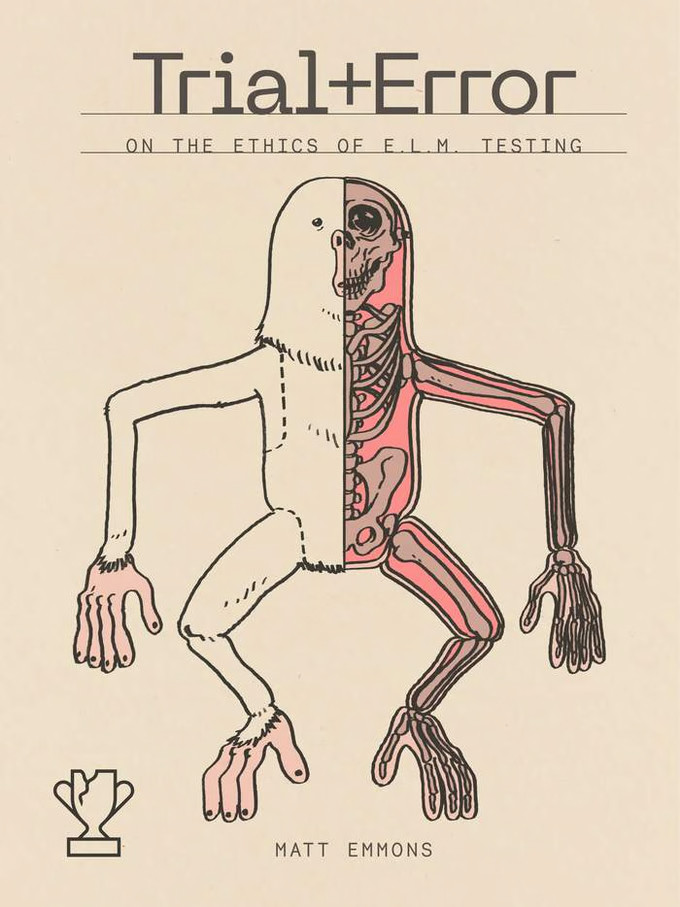
#50) Trial+Error
At this point, I’m not sure what a Choose-Your-Own-Path comic would have to do to be kept off my favorite comics lists. It’s absolutely a cheat code key to my heart, right up there with peanut butter and my 3-year-old telling me out of the blue, “Hey Dad, you’re pretty good at basketball” (unprompted!). Nonetheless, when you combine my affinity for flipping pages with the post-eco-apocalypse anthropomorphic animal cartooning of Matt Emmons, you have the recipe for one of the best comics of 2025.
Trial+Error (via Emmons Second at Best press, with title and layout credits to Kyle Murdough) is one of 2 new 2025 graphic novellas released via Emmons latest Kickstarter success. Its companion, Daystar, follows the nature (heh) of my other favorite Emmons’ comics (Council of Frogs, y’all!), following a sentient rat navigating a supernaturally horror-infused post-human ecological ruin. Trial+Error isn’t entirely dissimilar (you’re a robot-monkey born into a laboratory full of deceased human remains and mysterious creatures – I’m starting to get the sense Emmons doesn’t have great hope for the climate crisis), with the great exception that you get to choose your own path. Like a GOD.
Emmons is one of my favorite do-it-all cartoonists, marching completely to the beat of his own drum (the drum is, of course, being stomped on by wolves). Where many anthropomorphic forest animal narratives lean to whimsy or comedy, Emmons leans towards the strange, foreboding and at times grotesque, an eagle with its innards exposed, or a racoon-priest wearing its own pelt as a cloak (wtf?!). Yet there’s always a heart at the center of these works, and in Trial+Error it’s our own wide-eyed naivety channeled through the freshly-created E.L.M. On a purely structural level, Trial+Error never approaches the snaking-turns of Jason Shiga’s choose-your-own comics mastery, but I’m deeply smitten with the inclusion of optional mini-pamphlets scattered throughout the journey, like the material addendums of JJ Abrams and Doug Dorst novel S. Ultimately, the test of a work like this is do you want to start at the beginning and try as many paths as you can? For Trial+Error, I choose “Hell yes!”

#49) Aliens vs Avengers
There have been a handful of times in my life where I let corporate cynicism completely blind me to the possibilities of good art. One of the most memorable came when it was announced the 2021 Guardians of the Galaxy would only let you play as a Star-Lord that looked like a Paul family castoff. I snap-judged the game as a bust… only to find it’s probably my favorite Guardians story/experience of… all time.
That same cynic surfaced when Marvel announced the dream team of Jonathan Hickman and Esad Ribic (YES!) would be reuniting on a 4 issue mini, Aliens vs. Avengers (WTF?!). Saying this as someone who owns print copies of Frank Miller and Walt Simonson’s Robocop versus Terminator, franchise crossovers are inherently transparent cashgrabs, even when the creators involved are firing. Putting Hickman/Ribic on a “Disney owns Fox now!” book feels like Patrick Mahomes and Steph Curry teaming up to sell crypto.
Leave it to Hickman and Ribic to completely upend this theory. In the parlance of the local youths I play hoops with, Aliens vs. Avengers is in its bag. In one of the stranger miracles of comics this year, these four issues feel like a proper sendoff to Hickman’s Marvel Universe works, a Marvel Universe: The End spurred on by those wiggly lil’ Xenomorphs. By god, there Hickman and Ribic go even delivering on the Sinister pits of Mars teased in House and Powers of X and never delivered upon in Krakoa proper. It’s not quite the Hickman X-Men ending we’ll never get (cries in the key of loss), but it’s probably the closest we’ll see printed!
This is the part of the write-up where I hope I’m enough paragraphs deep no one sees this: I flippin’ watched all the Alien movies for the first time because of these comics. They’re that damn good (my review: You should definitely watch and Alien and Prometheus to fully enjoy this work. Everything else is sus but kind of a good time. Who knew!). Hickman and Ribic really cut to the essence of what’s intriguing about Prometheus, emphasizing the Engineer’s angle as gods unsatisfied with their creations, and the all-out devastation from a war where both sides simply want to annihilate the others.
Oh and by the way, this book makes such great use of the Marvel Universe. Huge moments for Hulk, Miles Morales, Venom, Wakanda, Captain Marvel, Iron Man, Armor, Emma Frost, Sinister… like I said, Hickman’s in his bag! So, yes, I can be brave enough to say it: I was wrong. I was wrong! Aliens vs Avengers is excellent. It’s an all-timer, an instant Marvel graphic novel for the canon.
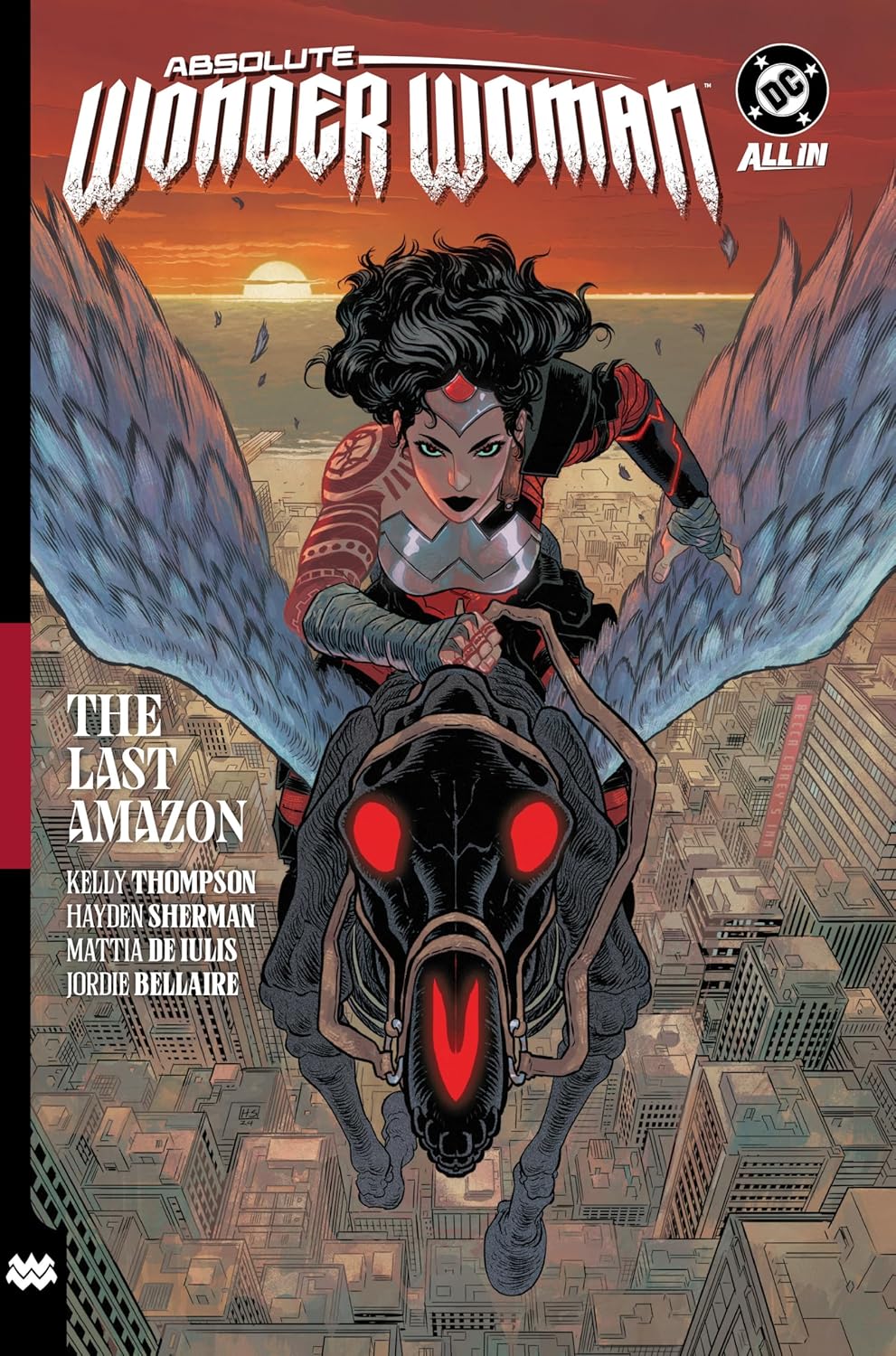
#48) Absolute Wonder Woman Vol. 1
I have gone back and forth approximately 12,000 times whether or not I like Absolute Wonder Woman more than Absolute Batman, and if you ask me again tomorrow, I’ll probably make it 12,001. I have no idea which of these is the “better” book (it’s almost like obsessively ranking comics you love is a preposterous endeavor?), but I do know how thrilling it is that they establish the same spirit and mission statement for the Ultimatification of DC Comics. Much like Scott Snyder and Nick Dragotta on Absolute Batman (and now Deniz Camp and Javier Rodriguez on Absolute Martian Manhunter), Kelly Thompson and Hayden Sherman are fully committed to the idea of a lightly remixed Diana via prestige production. While the formation of the Ultimate 2niverse is clearly articulated, Absolute DC is much vaguer. This is the universe founded on “Darkseid Energy,” which is a little bit like trying to convince my wife my boys need to play basketball with me so they can “Be Like Mike.” In the wrong hands, this could be yet another attempt to toughen up and militarize Diana (what’s up Tom King’s Wonder Woman!). Thompson is too smart for that, and instead, the inverse of a girl raised in Paradise, is a girl raised by Circe in Hell. Here she comes, with all the best gear from Elden Ring soaring on the wings of a skeleton horse, ready to fight similarly engorged monsters threatening humankind.
Of course the real spirit of Absolute DC is emphasizing the artists involved, and Hayden Sherman is quickly on their way to superstardom (just wait a few spots for some words on Batman: Dark Patterns!). In two years of interiors across DC Comics and Into the Unbeing, Sherman is already doing more with non-traditional layouts than most artists publish in a lifetime. It’s like Sherman grew up on Moore/Totleben/Bissette Swamp Thing and internalized that snaking, vine-like panel borders are simply how things are done. On top of that, Sherman channels Moebius’ soft touch, and an innate brilliance for monster design. It *should* be without question that Dragotta’s Batman is the unrivaled visual redesign of the year; it’s not because of Sherman.
So is it the best of the Absolute Universe? I still don’t know. But I know that it *could be*. And oh to have the debate!

#47) Life Drawing
I’ll be honest, when I picked up Jaime Hernandez’s Life Drawing, I assumed it would be an art book highlighting the hall-of-famer’s Love and Rockets work throughout the years. Who better to teach how to draw life than one of Los Bros Hernandez? Even better, Life Drawing is a decade-in-the-making collection of Jaime’s most recent Love and Rockets comics, collecting stories from Love and Rockets Vol. III #7 and #8, and Love and Rockets Vol. IV #1-#2, and #6 to #15.
I was particularly struck reading these issues how playfully Hernandez riffs on Charles Schulz’s Peanuts, in the endless charm of the minute Lothario “Go Home, Frank Lopez!” or repeatedly in Tonta’s misadventures. Admittedly, it’s been a few years since I’ve read any Love and Rockets, but damn if it doesn’t wash over easily, regardless of how caught up I feel on Maggie and Ray. I think Life Drawing works well on its own, as an unlikely bonding between Tonta and Maggie forms over Maggie’s fear of the ocean, but it’s also an effective reminder that I should probably stop messing around with all these other comics and just read more Love and Rockets.
Hernandez can sell sexuality with fewer lines than should be possible, and oscillates between comedy and humanity with an ease that few other cartoonists have ever mastered. The master’s current rate of output – a new issue of Love and Rockets comes about every 6 months via Fantagraphics – ensures their status as living legend never quite dissipates, but also never quite catches a groundswell of modern attention.
Now if you’ll excuse me, I need to catch up on what Gilbert’s been doing in those issues!
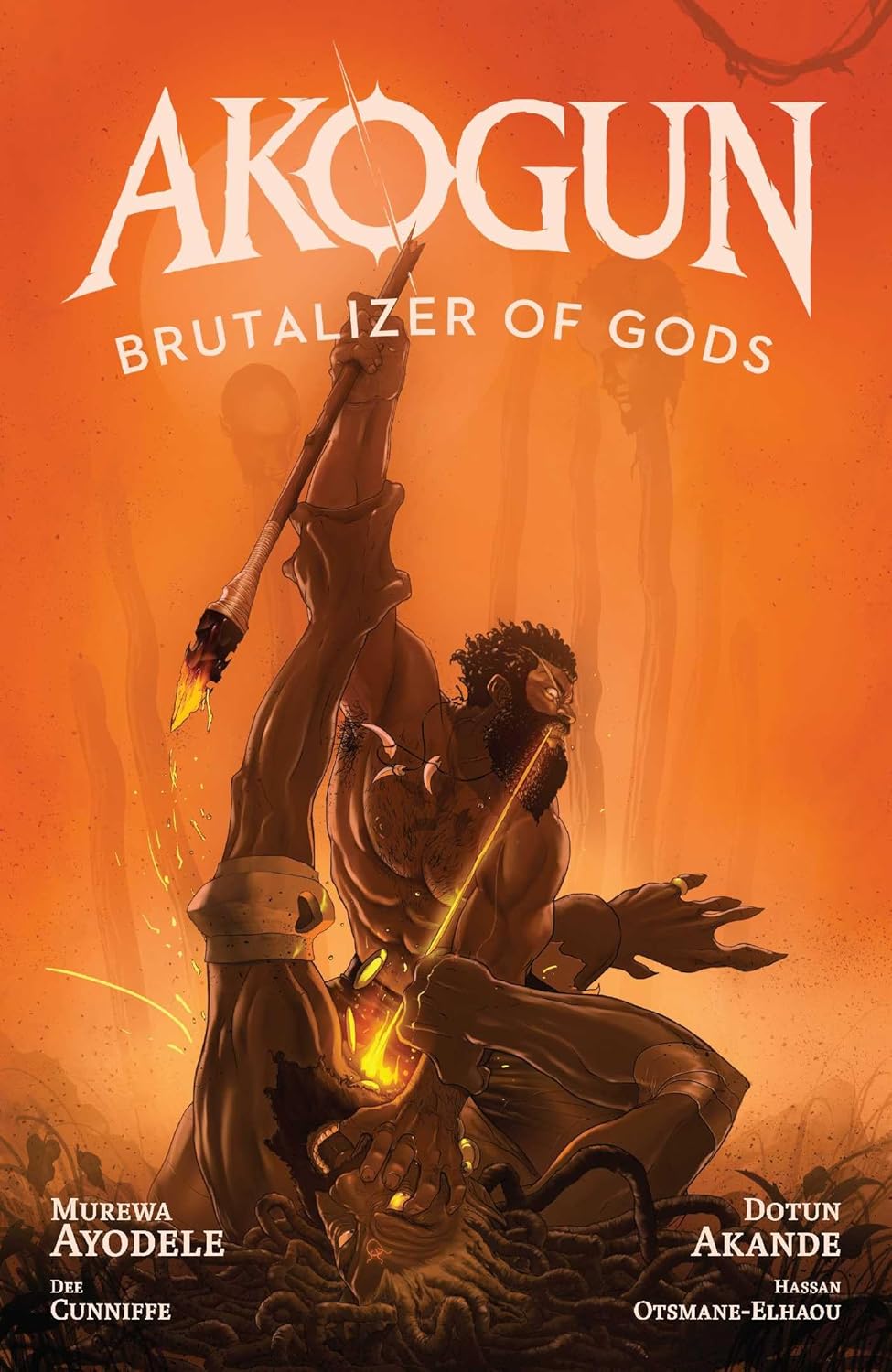
#46) Akogun: Brutalizer of Gods
Sometimes the pompous-pretentious part of my brain overrides one of the more crucial rules of comics: they’re supposed to cool. Obviously there are exceptions – I’m not sure I could consciously describe any part of a Chris Ware story as cool – but if you’re playing with superheroes, fantasy or mythology, listen, get as smart and crafty as you damn well please, just don’t forget to also kick some ass.
Murewa Ayodele and Dotun Akande’s three issue graphic novel from Oni Press is as cool as they come. This is African fantasy where gods fight at a level befitting their station, tricksters craft decades in the making plots involving “Brutalizers of Gods”, and Rhinos rampage forth with golden horns and tusks. Akande’s beasts, gods and worlds are designed to evoke all the most thrilling high-fantasy tales of Thor or Wakanda, and Ayodele writes with a confidence and patience befitting a creator selected to take on Marvel’s most well-known goddess: Storm.
Ayodele and Akande work beautifully together, alternating between narrated fables, erotic intimacy, and, yes, cool-as-hell fights to the death. The only limitation is a creative unit so confident and ambitious that the shared-tethers of the plot edge and fray with each scene-cut and time jump, losing clarity around all those pesky who-what-wheres. Put more directly: Akogun‘s kind of confusing! My hope would be that should a Season 2 come to fruition – and sign me up – the puzzle pieces slide together a little more neatly. After all, we already know they look the part.
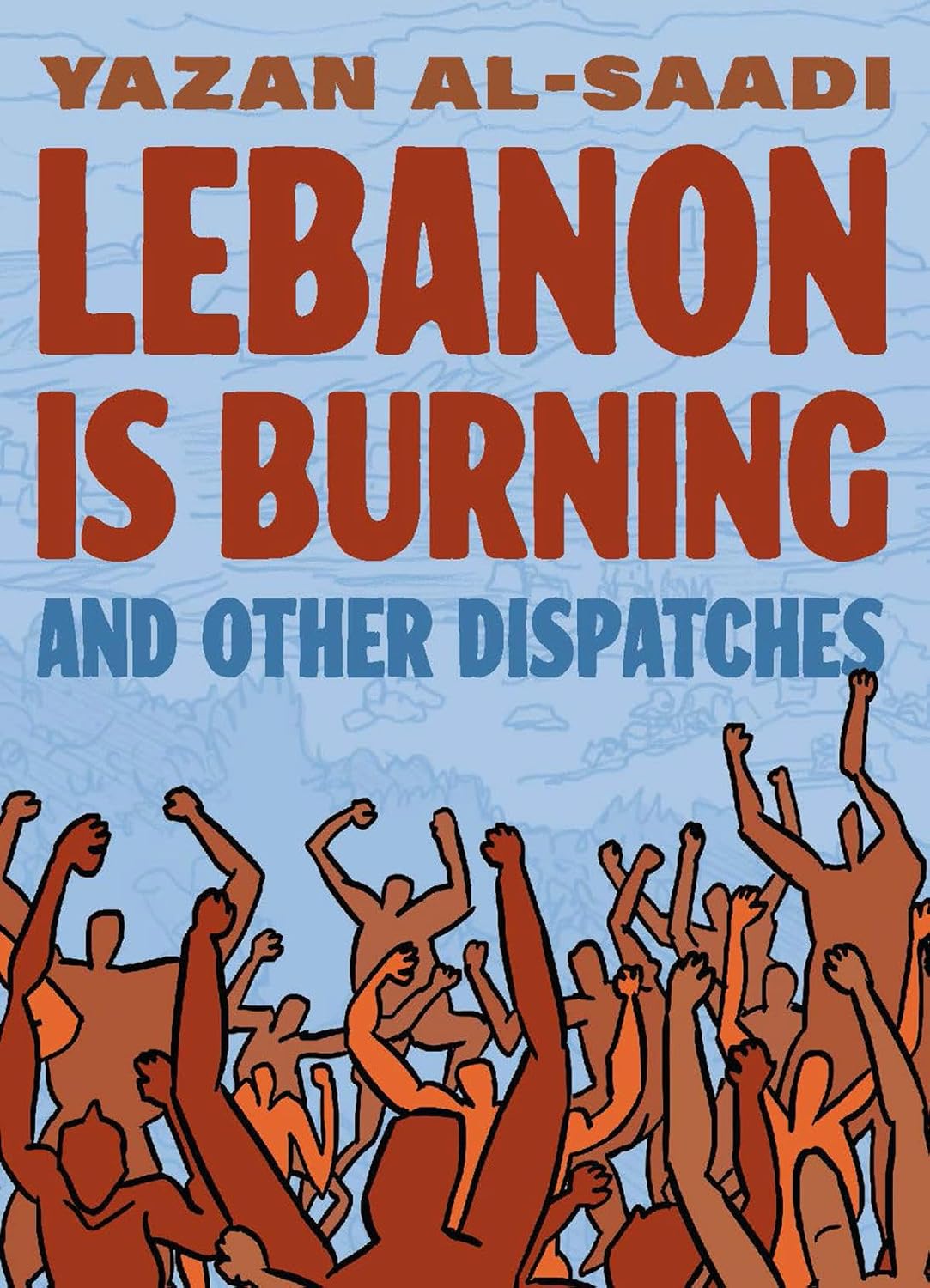
#45) Lebanon is Burning: And Other Dispatches
One of the more common refrains about the Middle East (at least from my vantage in the American Midwest) is that understanding is simply too complicated. I have grown up surrounded by a prevailing assumption that the cultures, and regimes, and decades of conflict were really only navigable to the most seasoned political and foreign affairs experts. But like most big issues of our time, ignorance only persists if you avoid, bury, or disenfranchise education. I am not an expert on Lebanon, Yemen and Palestine; but I am reading, and I am trying. It’s less impossible when you try.
Lebanon is Burning is a high quality aid in this effort, a series of 14 essays and works of graphic journalism that tackle modern acts of resistance in Palestine, Yemen, Syria, Bahrain, Egypt and the surrounding regions. The introductory essays and comics are written by Syrian-Canadian Yazan Al-Saadi, with a variety of artists from across the discussed Middle Eastern regions (Tracy Chahwan, Ganzeer, Ghadi Ghosn, Omar Khouri, Sirene Moukheiber, Hicham Rahma, Enas Satir), offering an important grounding in the authenticity of these histories. In the spirit of Joe Sacco’s Palestine, Al-Saadi isn’t faking at an overly polite objectivity that will avoid ruffling feathers. He has opinions and they are clear, and supported in a heavily researched and sourced work published by Penn State University Press. It’s vital, cutting journalism exploring and explaining so many topics we’ve been told are out of intellectual reach.
Purely on the level of comics experiment, it’s invigorating to find such a well assembled anthology of differing art styles, all glued together by Al-Saadi’s narration and the purpose of the work. You’ll find loose Comix inspired cartooning among more textbook historical depictions amid abstract confluences of data, infographic and human suffering. Even if much of these histories and stories are better known to you, it’s compelling to watch all these artists bring them to life for the ignorant like myself.
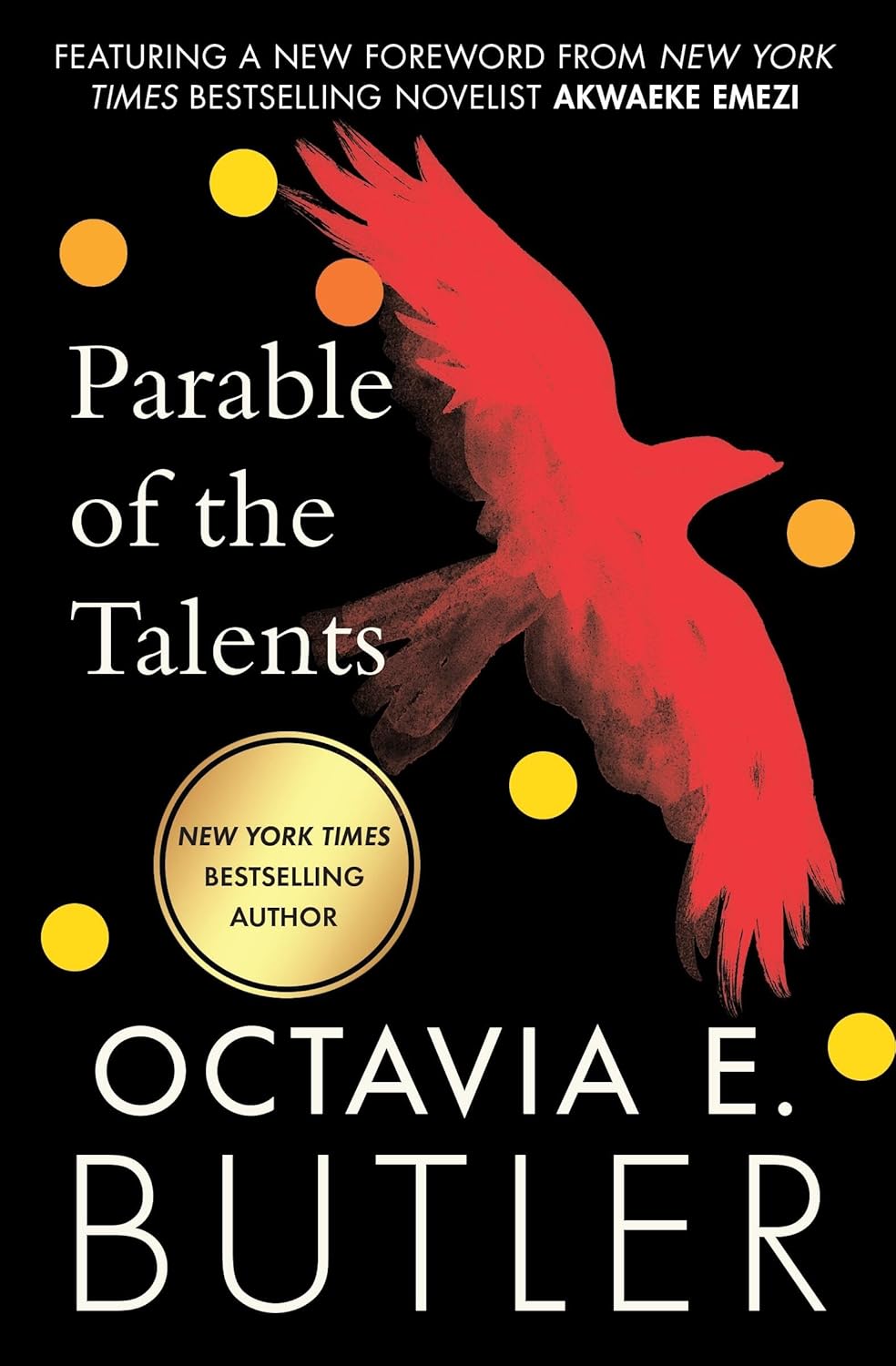
#44) Parable of the Talents
The most – perhaps only – sensible argument against reading the Abrams ComicsArt adaptation of Octavia E. Butler’s Parable of the Talents is that you should really just read the original book. Yes. Sure. Agreed! Ok, with that out of the way, we can continue to celebrate Damian Duffy and John Jennings’ work adapting the works of Butler, starting with Kindred and Parable of the Sower before returning in 2025 with the sequel, Parable of the Talents. They’re perfect introductions to Butler’s devastatingly prescient literary sci-fi, particularly for those of us more likely to pick up a new graphic novel than a novel from the 90s (sheepishly raises hand/dodges tomato).
For those entirely unfamiliar, yes, you need to read Parable of the Sower before Parable of the Talents. This will not make a lick of sense if you don’t. Talents picks up shortly after Sower, continuing to tell the journey of Lauren Olamina and her Earthseed religion, centered on the philosophy that God is Change, and the destiny of humanity lies in the stars. Butler’s Parables are dystopian, near post-apocalyptic, and strikingly reminiscent of contemporary American politics. Talents is full of a Christian-Nationalist Fascist elected president of America while using the slogan “Make America Great Again.” Have I used the word prescient yet? It’s insufficient.
Butler’s Parables make for extremely difficult worlds, full of horrendous suffering, violence and trauma. Perhaps I’m just shielding myself but Talents felt even harsher than Sower, with an extended period of the work focused on Lauren’s Earthseed commune of Acorn forced into slavehood via control-collars by the most vile “Christian” enforcers possible. Duffy and Jennings tackle these challenges with appropriate care, and a clear reverence for the source material. The adaptation team is particularly adept at pacing out poems and scripture from Earthseed, and the proclamations from the future of Lauren’s daughter Larkin, to break up the narrative and assure readers that there is indeed a future of any kind waiting.
Whether it’s the novels or these graphic novels, the only important detail is that you read Octavia E. Butler.
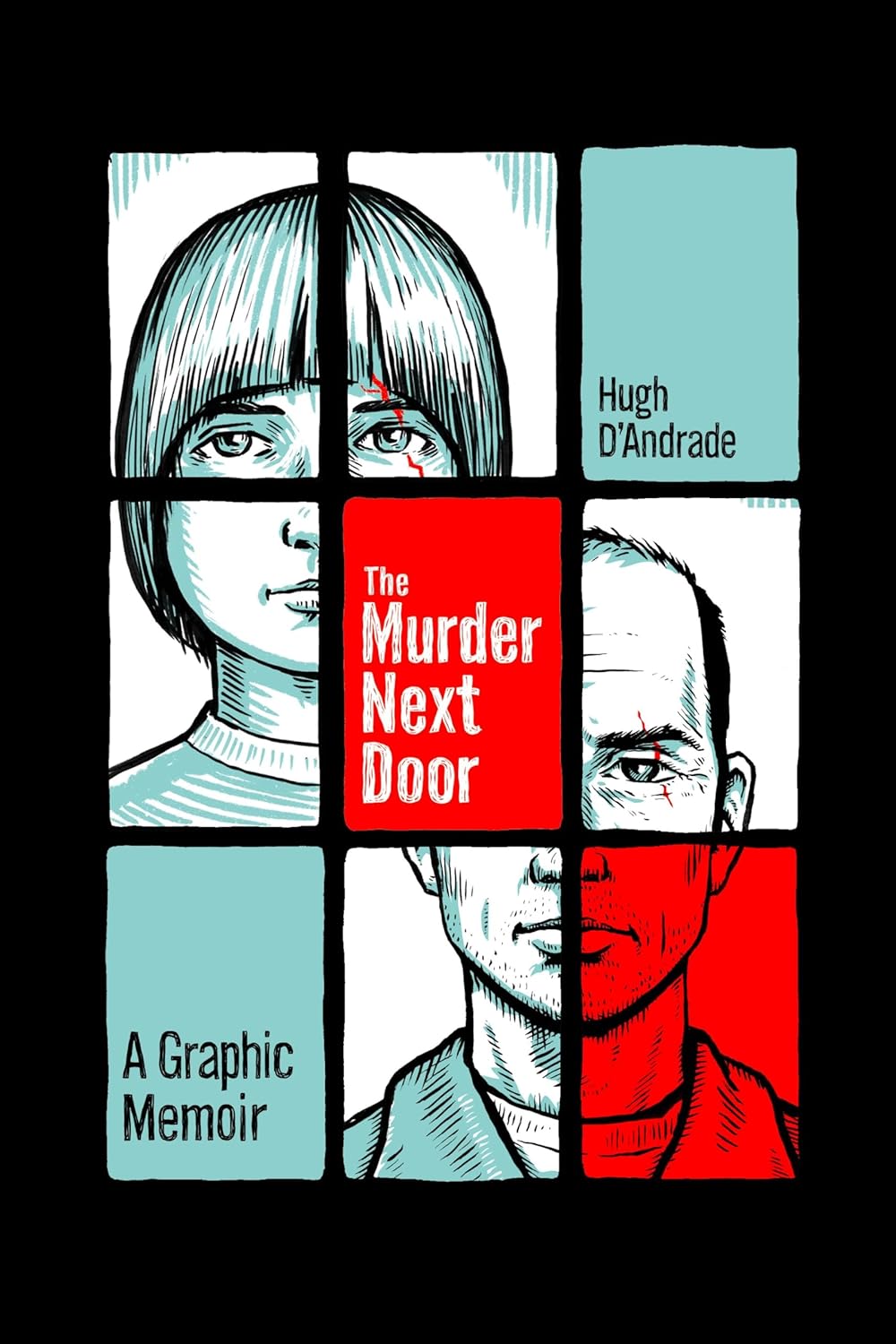
#43) The Murder Next Door
Hugh D’Andrade’s debut graphic novel from Street Noise Books is a striking testament to the lasting tendrils of an act of violence. As a child, Hugh goes inside his neighbor’s home and discovers his friends mother murdered, bled out on the living room floor. D’Andrade details the memory of the experience through the lens of his ongoing therapy sessions working out the lasting impact of this moment, and how it shattered notions of safety. Told through confident monochromatic autobiographic reflections, The Murder Next Door is sad, haunting, thoughtful, charming and reflective. On the surface it seems like the subject matter will run out of runway, but D’Andrade finds intriguing angles throughout, such as how the witnessed violence shapes his own views and fears surrounding masculinity, and the direction of his angry protests as he grew up. It’s an earnest, effective entry in the great history of autobiographic graphic novels.

#42) Kaiju No. 8 Vol. 12
One of the problems with Chainsaw Man becoming one of my first mangas I’m caught up on is it spoiled me rotten for expectations from Shonen Jump. Turns out Tatsuki Fujimoto’s sensibilities and skill (and most importantly: uncompromising vision!) are hard to match. A lot of Shonen Jump has felt quite tame by comparison, leaving me gravitating towards works outside that realm (books like Hirayasumi, The Guy She Was Interested In Wasn’t a Guy At All, The Summer Hikaru Died, and Tokyo These Days).
Kaiju No. 8 is the hardest I’ve fallen for a Viz Shonen Jump title since Chainsaw Man. In a lot of ways, Naoya Matsumoto’s monster-hunting action-adventure is the Blockbuster Movie cousin to Chainsaw Man, full of demonic Kaiju designs and incredible kinetic violence, but with the strangeness of Fujimoto sanded down for consumption. Matsumoto can hang with the best of them on pure monster design, pacing and action, but the secret sauce of Kaiju No. 8 is how remarkably funny and compelling Matsumoto makes the cast.
In 2025, Kaiju No. 8 ran full steam towards an appropriately epic 100th chapter, with impossibly high stakes growing even higher by book’s end. The pedal is practically scraping the asphalt its pushed down so hard; I can’t wait to read the next volume!
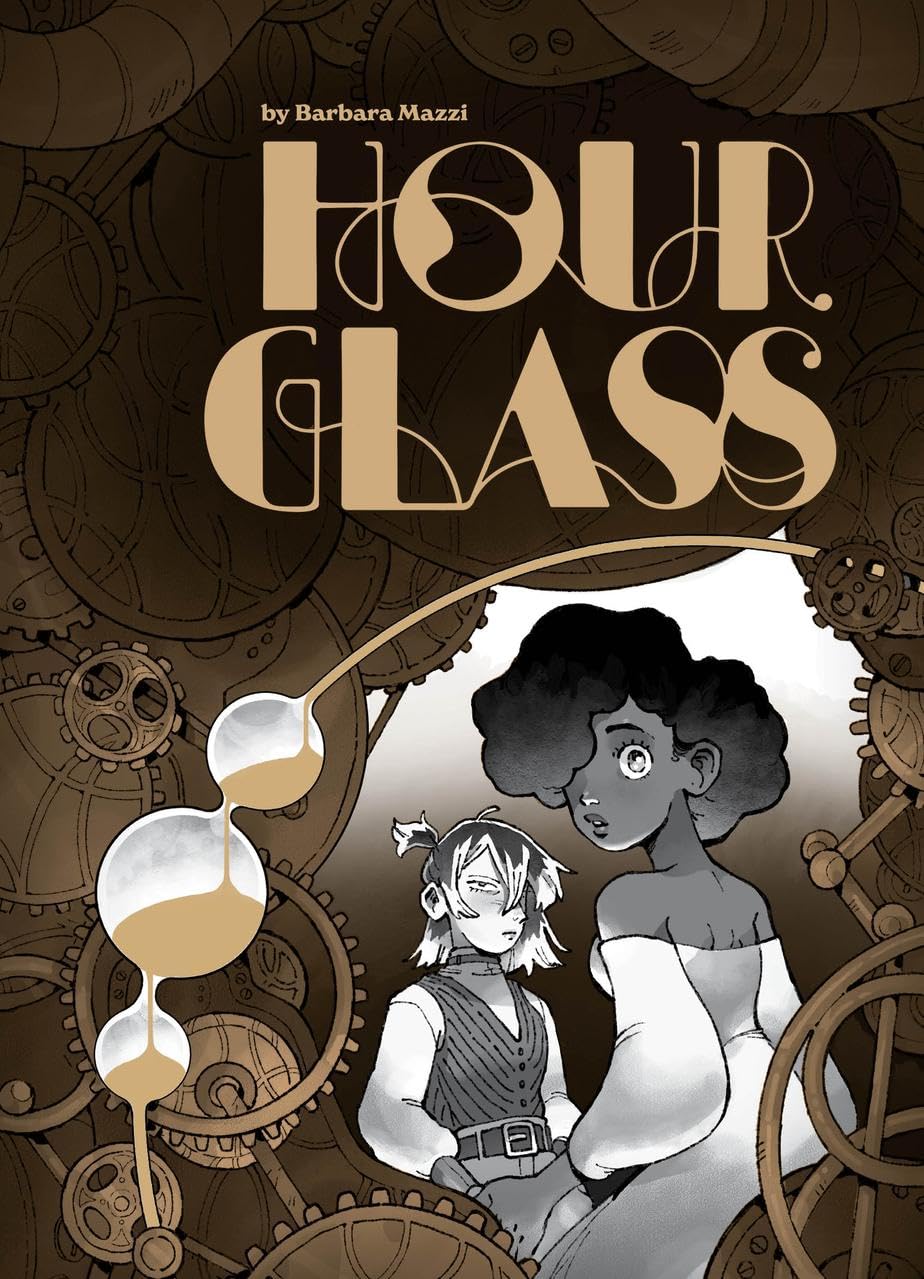
#41) Hourglass
Barbara Mazzi’s Hourglass opens with a splash page of a young woman navigating the gear-laced halls of this fable’s almighty ‘hourglass,’ a technology that effectively grants immortality to the wealthy. This single image is rich with golden churning cogs, snaking pipes, and a perspective that seems to indicate machinery that goes on forever. Mazzi displays a gifted ability to snake between youthful wide-eyed wonder, the opulence of this world’s de-aged upper class, and the grime of the cutthroat workers ensuring the longevity of their rich overlords. It’s a compelling commentary on class through a storybook romance that feels like it’s always been lodged in the subconscious just waiting for someone to pull it out.
Hourglass is the kind of YA graphic novel that trusts a readership with layered themes and complex decisions, reminding me of the First Second graphic novels of Jen Wang. I won’t spoil it, but the work’s explosive conclusion is impossible to put down, and Sopranos-esque in its enigmatic meaning. At a sprite 100+ pages, the work sacrifices the emotional resonance of supporting players (there’s a bug-eyed laborer with some WILD thoughts about the religion of the Hourglass that we could unpack!), but I’ll always favor immediacy over sprawl. Another win for Silver Sprocket, and a work that launches Mazzi onto my radar for all future creations.
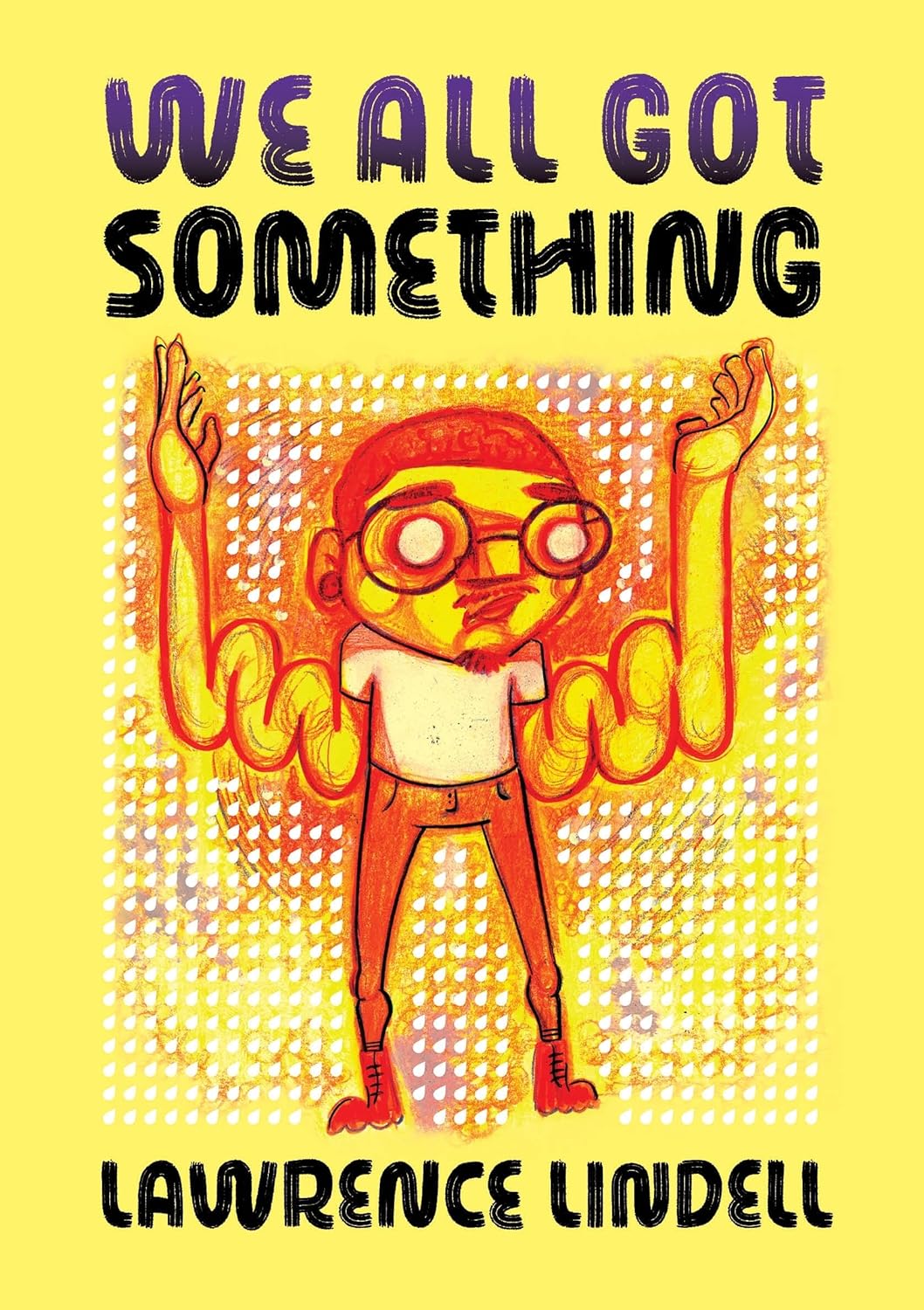
#40) We All Got Something
Comics does not lack for autobiography about broken hearts and failed relationships, but the thing that sets Lawrence Lindell’s new graphic novel apart is the *pacing* and trust in the reader. Lindell’s graphic stand-in is maddeningly tight-lipped when it comes to details – it’s a long story, he repeats – as we’re left to wonder what exactly happened that ended his relationship, brought him home from abroad, and put him in a deep depression. In a tight 150+ pages from Drawn & Quarterly, Lindell proves himself as a cartoonist capable of unique storytellling choices that immerse us in the specifics of a bi-polar fueled crisis of confidence, while remaining widely applicable to the full human experience.
While it’s perhaps a platitude, Lindell also does a great job exemplifying the inner depths of “we all got something,” or the simple notion that each and every one of us is fighting some kind of battle. Perspective is certainly a must, but this can also go too far the other way where we start to think our own struggles don’t matter, or aren’t worth attention, simply because they are not as apocalyptic as some perceived “real problem.” For Lindell, this manifests as self-awareness about the impact of bipolar mental health, and the ways that shapes a willingness and desire to pursue creativity. None of this is overt – it simply pulls through an expertly crafted series of conversations and memories, into a slice of life fully felt.
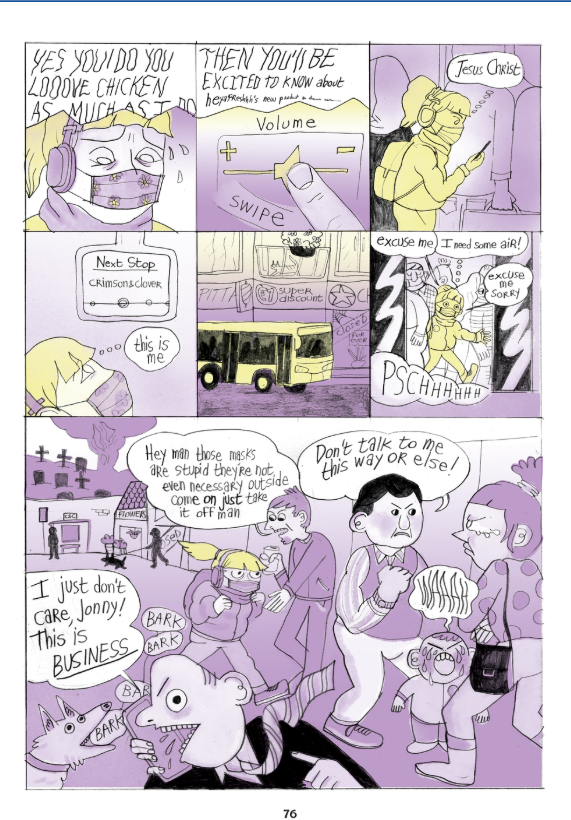
#39) A Strong Woman and Other Stories
Valentine Gallardo’s collection of 9 short stories is my favorite entry in Fieldmouse Press’s experimental, supremely well-curated Winter selection of comics. Gallardo’s chameleonic cartooning flits in and out of styles and degrees of realism, but perpetually retains extremely relatable neurotic concerns that we’re probably not doing life right. The selection could be roughly categorized as experimental slice-of-life, with Gallardo showing a particular knack for distilling the internal worries of modern technology and social pressure. I gravitated towards the stories that slipped in a dose of magic, whether in Super Secret Werewolf Club (I’ll be honest, cartoonists drawing awesome wolves is like 90% of the key to my heart) or My Trusted Assistant (which expertly dissects AI/Voice assistants and their impact on cognitive function and creativity).
In general, I find comics reliving the pandemic unreadable, but Gallardo’s The Lockdown Party defies expectation, escalating into a bad trip mixed in with the mess of complicated relationships in your twenties. This is a really impressive display of flexibility from a talented cartoonist I’m excited to follow into the future.
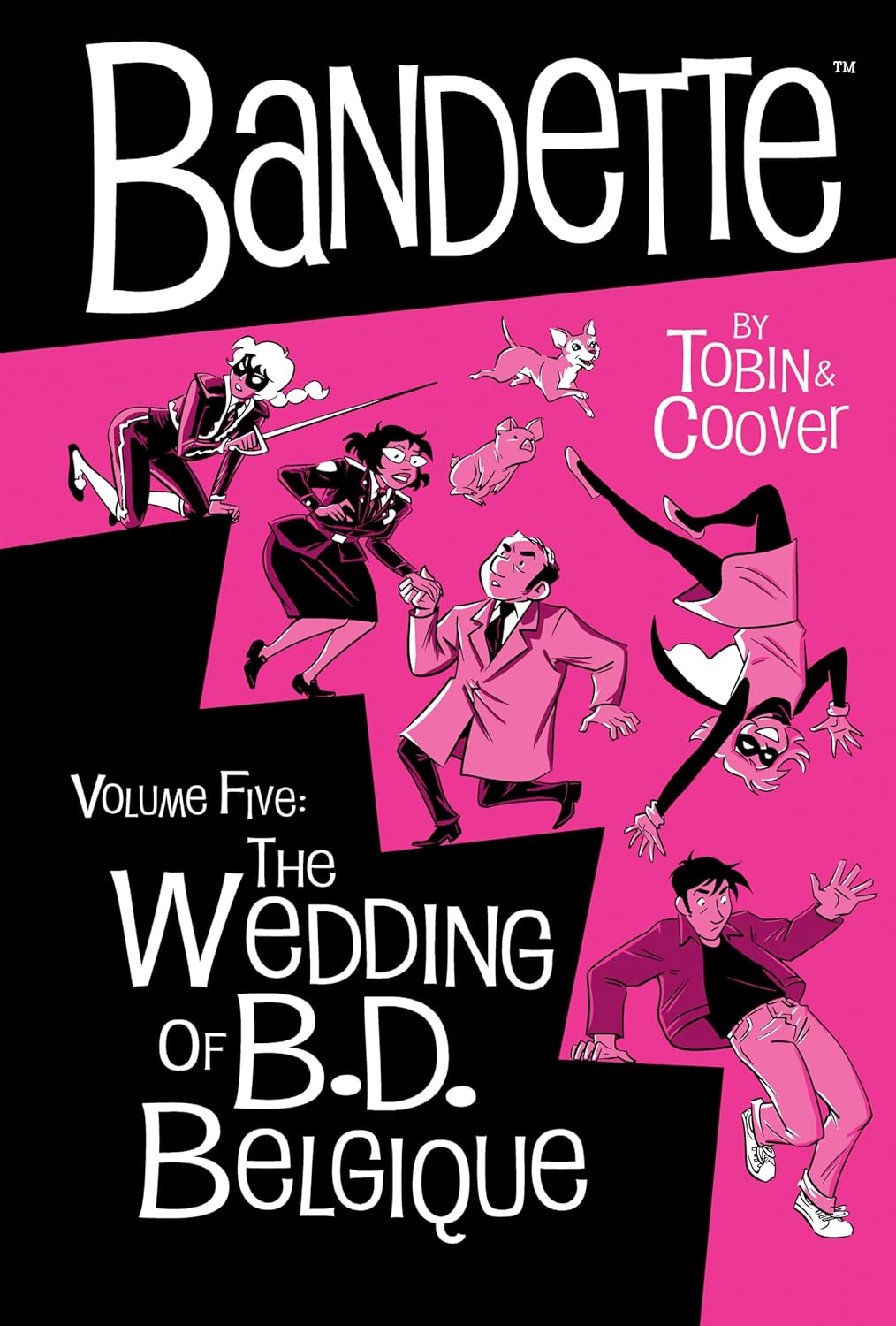
#38) Bandette Volume Five: The Wedding of B.D. Belgique
Paul Tobin and Colleen Coover’s Bandette has been one of the most charming, skillful all-ages works in comics for over a decade, and the tales of the effervescent titular French thief and her cadre of colorful allies are as strong as ever in 2025. Bandette’s B.D.E. (Bande dessinée Energy) is infectious, balancing Coover’s gorgeous digital watercolors and Franco-Belgian inspired visuals with Tobin’s keep-em-laughing gag-a-minute approach to Bandette’s impossible magnetism.
While it’s perpetually delightful to watch Bandette steal the mustache off a detective, Tobin and Coover are particularly adept here at the right balance of threat and suspense with a lead as in-control and unflappable as the likes of Sherlock Holmes. The threat of The Voice very much feels real – feels menacing – right up until the moment that Bandette, Matadori, Pimento and the most wonderful cast of characters are making a mockery of his evil schemes. Any year that features new Bandette comics is a gift.

#37) Cry When the Baby Cries
Becky Barnicoat’s memoir depiction of becoming a parent is painfully earnest, often quite funny, and tremendously accurate. A good 80% of the truths of new parenthood Barnicoat describes here are things my wife has told me or we’ve experienced together. Presumably the other 20% are just where my wife drew the line but Barnicoat chooses to reveal. Much like Liana Finck’s How to Baby, Barnicoat pokes through the illusion of social media portrayed parenting to reveal the messy, disastrous, and occasionally transcendent experience of actually bringing a baby into this world.
Barnicoat’s experience resonates deeply, and her willingness to draw herself as an absolute decaying mess during the most fraught moments lends a humorous self-deprecation to the entire read. I was particularly impressed and thankful that Barnicoat extended the work into the toddler experience (most books like this stop right after baby), and that Barnicoat revealed a miscarriage after two healthy kids. My wife and I have had a similar experience, and you realize when it happens that it’s one of the most common life experiences that very few people ever share. Whether with humor or with grace, that’s where Barnicoat excels; sharing the unshareable to arrive at a deeper truth.
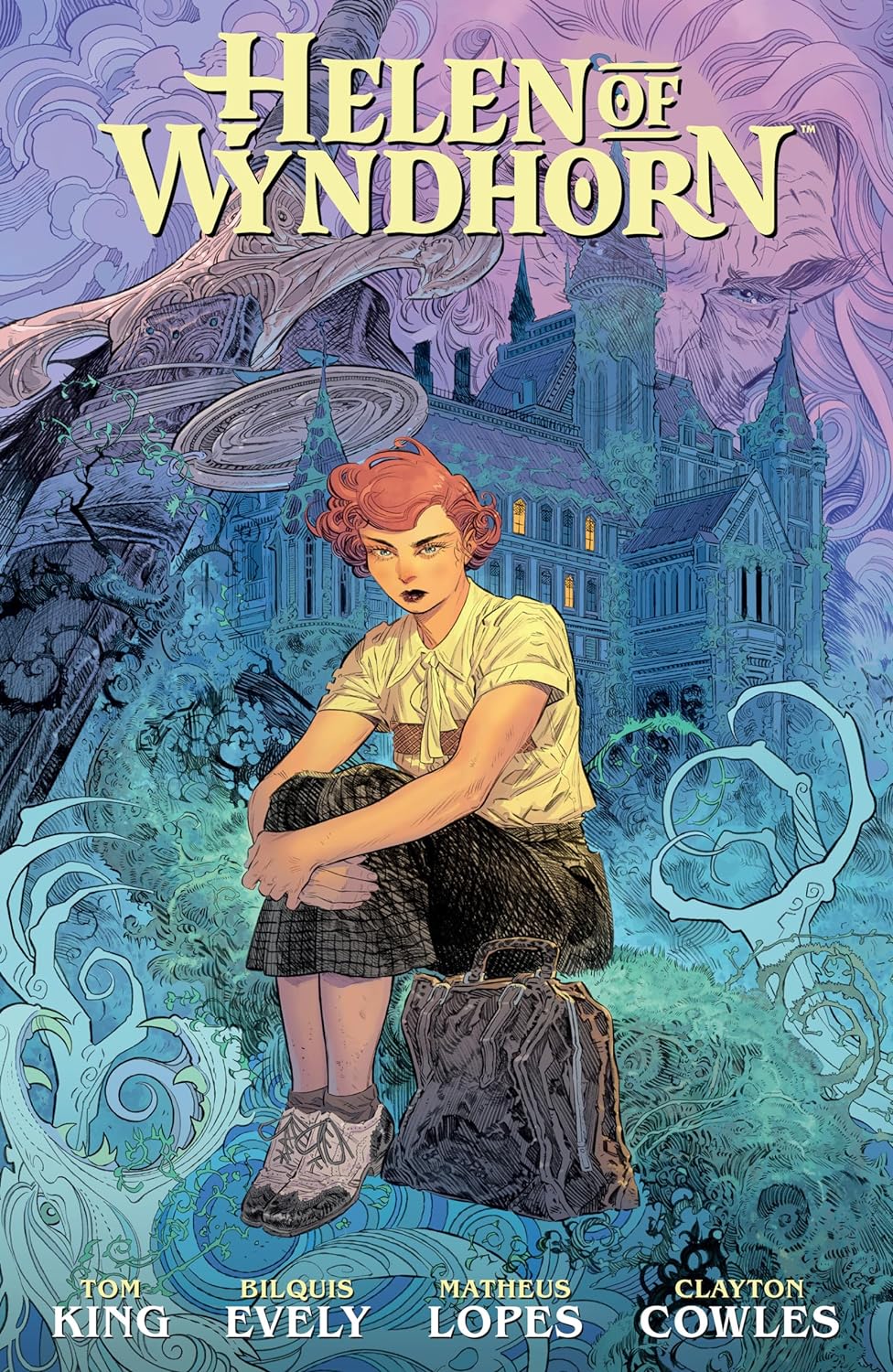
#36) Helen of Wyndhorn
Bilques Evely and Matheus Lopes are among the absolute top tier of artist and colorist combinations capable of reaching the heights of wonder offered by fantasy comics. The legend of their cosmic sunrise in Supergirl: Woman of Tomorrow only continues to grow, and the duo returns with writer Tom King and letterer Clayton Cowles in Helen of Wyndhorn from Dark Horse Comics. Where Supergirl roamed the far reaches of DC Universe space, in Wyndhorn, Evely and Lopes get to create a Conan-meets-Narnia fantasy realm full of monsters, glowing gods, and barbarous tribes as far as the imagination can see. Evely’s work is hyper-detailed, expressive and purposeful, finding as much meaning in the reveal of Grandfather Barnabas feeding a small strange animal in a garden as the more “big-budget” grandeur of angel-eagles slashing through the sky-panels with a jagged sword gripped firmly in her talons. Lopes is perfectly suited to accentuate the moods and textures of these worlds, and together the duo wields impressive patience, knowing not every 3 pages can be a splash page spectacle or the moments lose meaning.
King is a rare tier of superstar writer in modern comics – as I write this, his Love Everlasting with Elsa Charretier was just announced as an optioned movie via Sony, and King is increasingly wandering the writer’s room’s of Hollywood. Though his DC work will forever be the most discussed (rumor has it the man is 20 issues into a run on Wonder Woman, but there’s simply no way to know if this is true), I’ve most enjoyed King’s break into creator-owned works this decade, and Helen of Wyndhorn is his tightest and most easily recommendable book yet. Whereas Love Everlasting is an admittedly intriguing gimmick that just won’t quit, Helen of Wyndhorn, much like gruff stoic Barnabas, is mostly to the damn point.
Structurally, Helen of Wyndhorn follows the Supergirl playbook, with King alternating between the journal of Helen’s Governess, the story of Helen, a young woman who recently lost her father (C.K. Cole the alcoholic, suicidal writer of a thinly veiled Conan the Barbarian analog), and is falling into the bottle as she’s transported to her grandfather’s (magical) estate of Wyndhorn. The work follows fairly predictably with Helen discovering her father’s fantasy was far more real than he’d let on, and finding her purpose in training for wondrous, magical, violent adventures with Grandpa Barny. Again, much like Supergirl, King is a studied and gifted scripter who understands when he’s working with visual dynamite, and he knows when to pass the ball and let Evely and Lopes deliver a slinking sea serpent bursting out of a swamp.
There’s a temptation to collapse into reflections on The King and I every time Tommy ballgame writes a new comic (don’t let me get lost in the King-ism of the non-sequitur scenes through the present-day nerd collector scene). It’s a byproduct of his unique CIA-crafted persona and some BELOVED comics like Mister Miracle that I’m as fascinated by the work as I am. But, in doing that, I’d be committing exactly the sin I’ve railed against in the James Gunn fueled love of Supergirl, which is overshadowing how heavily Evely and Lopes carry that work from mediocre to excellent. Helen of Wyndhorn is a better collaboration – the journals, for example, are far less tedious, far more full of character – and although I suppose it lacks some of the highs Evely and Lopes achieved, it’s simply a better full story. I greatly look forward to what this full team creates for us next.

#35) Monstress Vol. 10
Listen, Saga eats all the conversation, but if you’re looking for the actual best ongoing to make it from the Image Renaissance of the 2010s to present day, Marjorie Liu and Sana Takeda’s Monstress stands alone. It’s not just that Takeda does Lovecraftian-fantasy better than anybody this side of Gou Tanabe, or that in a just world, Liu/Takeda would be talked about in comics circles the same way dudes hyperventilate over Brubaker/Phillips and King/Gerads. And it isn’t just that sequences end with world-weary cats exclaiming, “Oh, f*** the poets” (although certainly that helps). No, it’s that here we are, a decade in, and I’m as invested in Monstress at issue #60 as at any point. That is *so* hard to do in comics. Hell, in any art.
Look up and down best of the year lists, and you’ll be lucky to find even a handful of sustained genuine ongoing comics *runs*. We are drawn to the new and shiny, and familiarity breeds contempt. Wherefore art thou, Ice Cream Man? A nation turns its lonely eyes to you The Department of Truth! Good-ass ongoings get overlooked constantly. And we wonder why Marvel reboots new #1 issues every other Wednesday.
ANYWAY – Monstress rules. We’ve entered deep enough into the narrative where the Old Gods are very actively involved, which means Takeda gets to go absolutely BANANAS with some of the most gorgeously violent monsters this side of Bloodborne. Crazy thing is Liu and Takeda are doing a similar dance on the very good The Night Eaters, but Monstress is the apex, the originator, the King Rhyme Animal. I envy somebody who hasn’t started Monstress yet the way I envy somebody who’s never seen The Wire. Oh, you sweet summer child. To be young. Enjoy it while it lasts!

#34) Spectrum
The winner of the 2025 award for “Comic I’d most like to reread next to a series of annotations” goes to Spectrum by Rick Quinn and Dave Chisholm, via Mad Cave Studios! It’s not often that I immediately want to reread a new comic, and it’s even less so to want to do it with homework! Spectrum invites chaotic mystery worth cracking, with alt universe Radiohead (my cipher throughout this journey) leading a host of music history references in a world where music has the power to alter reality. And boy is this reality altered; over the course of six issues Quinn and Chisholm soar through sci-fi space butterflies and all manner of supernatural page-exploding possibility. It’s not just that I *want* to reread Spectrum, it’s that I’d *have to* to even begin to give you a coherent understanding of plot!
If you told me Rick Quinn was an alias used by a time-traveling Grant Morrison from 1993, I’d have no choice but to believe you. Morrison is the ultimate “Come with me if you want to live” and then sprinting ahead writer, and Quinn follows in those “I ain’t holdin’ no hands” footsteps. This means there are times when the frenzied pacing falls right off the tracks, but the energy and enthusiasm are so high that I’m kind of willing to pull my ripcord and enjoy the rush. Personally, I think Spectrum would benefit from a little more breath-catching, a little more central Melody Parker narrative grounding the fever dream. Then again, grounding is for cowards.
I was already in the bag for Chisholm, whose incredible graphic novels Chasin’ the Bird and Miles Davis and the Search for the Sound have frankly redefined the potential for post-Phonogram reflections of music in comics. It’s thrilling to see Chisholm working on this level, taking those biopic bonafides and merging them with big Doom Patrol energy. Chisholm is a STAR on this book, a story that if told plainly would instantly fall to the $1 bins of shops around the country. If nothing else, you have to read Spectrum to see if you catch the Kid A references, and to see what Chisholm can do with sci-fi. This guy should be on the same hype train as Daniel Warren Johnson; Robert Kirkman, pick up the phone.
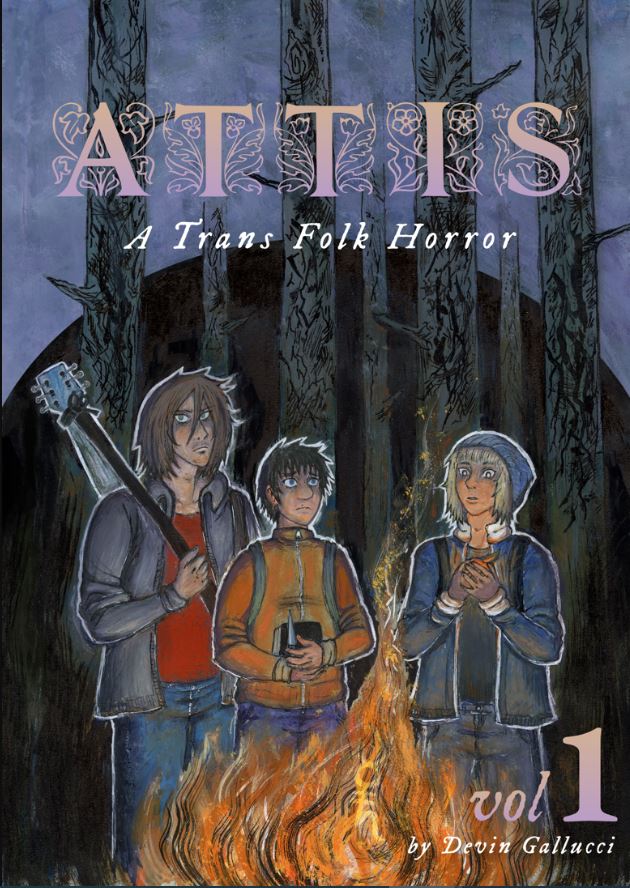
#33) Attis: A Trans Folk Horror
One of my simplest joys in 2025 was going to CAKE (Chicago Alternative Comics Expo) for the first time, and spending literally all the cash a Walgreens ATM would let me withdraw on indie comics and zines. The coolest thing about buying comics from total or near-total strangers is also the greatest risk: Aside from a handful of minutes agonizingly flipping through pages of their work in front of their con table (The sheer number of comics I’ve bought at cons because walking away was too excruciatingly awkward is north of “far too many”), I have no idea what I’m *really* in for. So while there’s the hope that my stack of passionately created art is full of secret gems no one else in the wide world of comics press knows about, there’s also the more realistic probability that many of them will go into a pile of odd curiosities that I’m glad I tried but don’t want to tell the world about.
Attis: A Trans Folk Horror by Devin Gallucci is why I take the risk.
A trio of queer characters are stuck wandering through a haunted forest, full of mysterious portents and wolf-dog-mans (no, not that Dog Man) in gloriously haunting black-and-white inks. I could certainly be wrong, but I interpreted the forest as a metaphor for living through the trans experience in a hostile world, with various characters debating “ways out” while another settles into finding a home and community among what they have. Regardless of your takeaway – and the work is strong enough to warrant multiple reads – Gallucci’s pencils are sharp yet flexible, clearly defining character yet slackening towards ambient supernatural fear when the situation demands it. The heart at the center of everything reminds me of a young Tillie Walden or Jillian Tamaki. And this is her *debut*! Can’t wait to see what’s next.

#32) Bowling With Corpses
The post-Hellboy comics career of Mike Mignola has been hard to define, probably because even after the “conclusion” of Hellboy in Hell, Mignola’s still been attached to the Hellboy Universe through various spin-offs, one-shots, or Mignola-verse standalones that simply feel like they belong in the Hellboy Universe through sheer force of Mignola’s idiosyncrasies. As a casual fan, I was largely under the impression that Mignola was in the outsourcing phase of his career, drawing the cover and writing Falconspeare with the wonderful Warwick Johnson-Cadwell, but not doing it all, the way Mignola did on Hellboy for 20-some years. Last year’s Miss Truesdale and the Fall of Hyperborea seemed to cement the limitations of this phase, as Mignola’s collaboration with Jesse Lonergan managed to stifle the boundless visual acuity of Lonergan, resulting in a completely passable work.
I was pleased to see this year that Mignola’s thick shadowy inks weren’t yet content with their corner of a well-earned tomb, and Mignola’s back in full with Dave Stewart colors and Clem Robbins letters on Bowling With Corpses and Other Strange Tales From Lands Unknown. As promised, Bowling With Corpses is 90-some pages of Mignola’s patented horror, adventure, mythology and riffs on obscure folklore. Initially, I’ll admit I carried a lot of skepticism towards Bowling With Corpses, at least towards the stated mission of Mignola building new worlds. It’s impossible for a Mignola written-and-drawn comic to escape the shadow of Hellboy, and as the artist admits in the graphic novel’s epilogue essay, exploring these unknown lands comes from a line and idea in Hellboy.
Ultimately, most of these short stories of immortal wizards using the dark arts and hapless adventurers destroying skeletons and vampire brides with an ancient corpse’s arm would fit right into any Hellboy story, sans titular pancake-loving demon. So I won’t sit here and pretend Mignola has entered into some new and surprising phase. But when one of the greatest living comics creators fully gives himself to doing what he does best, who cares how much it reminds you of past glories?! It’s still a blast! Mike Mignola arguably has the highest approval rating of any creator in comics, straddling that ever-challenging line between critically-acclaimed and commercially successful. Bowling With Corpses is a reminder of exactly why that is, and the idea of Mignola, at 64, saying “Hey, let’s build something new,” is something to be celebrated. Especially considering he’s barely lost a step drawing those haunting, muppety, pupil-less witches, crocodiles and all things gothic and great.
At the end of the day, Bowling with Corpses is Mignola through and through, right down to an irreverent sense of humor and love of the strange that compels him to end chapters with talking narrator ducks (no ducks were otherwise found in the making of these comics!). It’s the kind of work that can dazzle you with spectacle, tease you with world-building potential, and make you laugh out loud at a panel of a strangely plot-significant miniature cow. Do I think Mignola’s on his way to his next Hellboy? Hell, no! But I don’t need that, and neither do you. Let the legend cook!
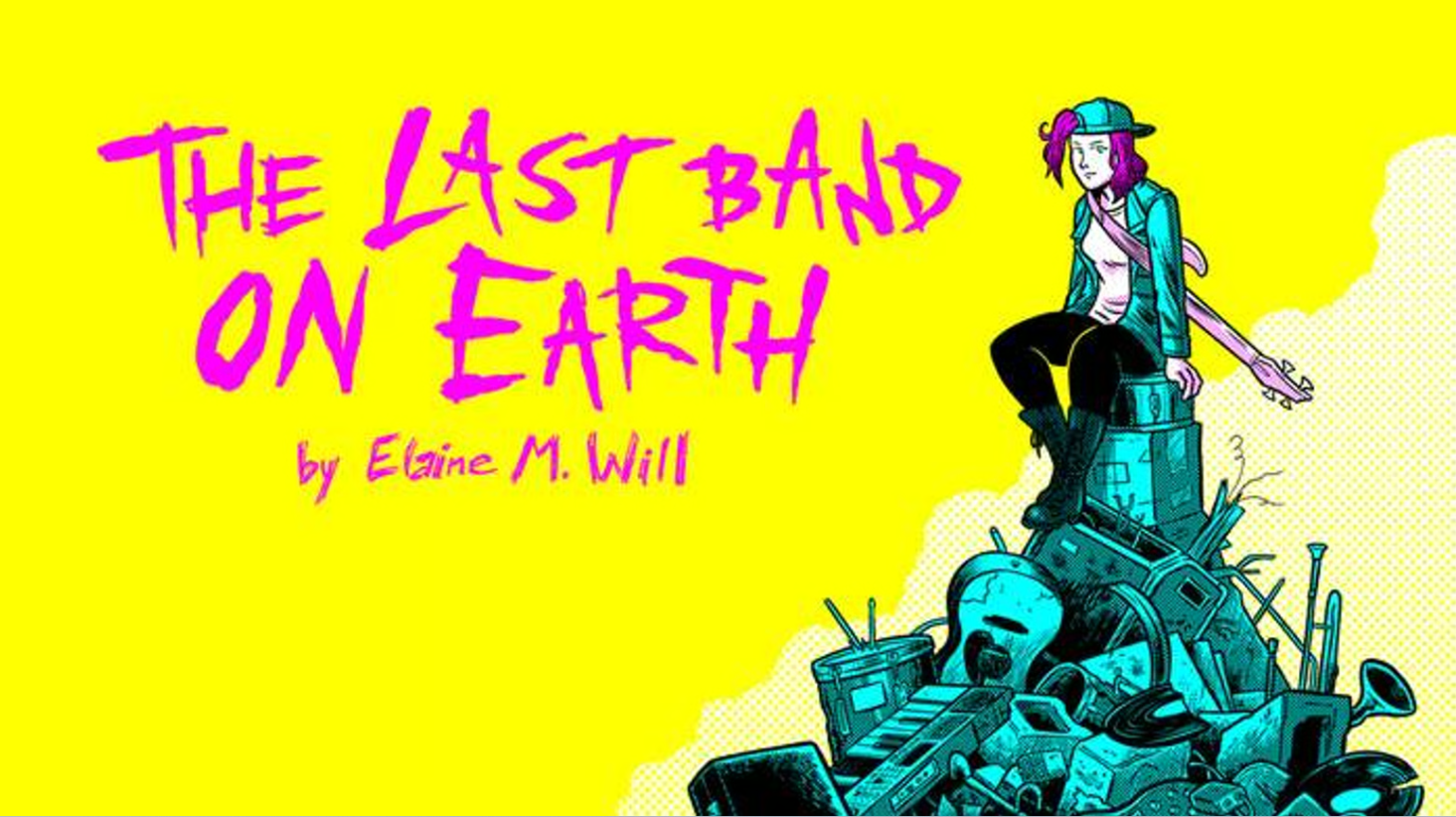
#31) The Last Band on Earth
E.M. Will’s self-published/Kickstarted The Last Band on Earth is an excellent graphic novel exploring one Noise Rock band’s (I’m imagining like late 80s Sonic Youth meets Liars meets Bardo Pond) attempts to escape a literal demon-occupied town for the supernatural wastes that lay outside the city they’re mysteriously trapped inside. The metaphor is quite nail-on-the-head (nothing says ‘We All Have Demons’ like actual Cthulhu tentacled pits full of demons!) but Will’s dedication to the characters and complexity of what it means to actually confront our darkest fears is masterfully executed. Whether it’s the raw emotional struggle of a flailing band on the road, a willingness to flirt with Ditko meets Dali layouts and design, or simply the fact that Will draws some rad-ass demons, The Last Band on Earth is one of my favorite reads of 2025.

#30) Ultimate Spider-Man Vol. 3: Family Business
If we formally designate House of X/Powers of X an event (or at worst, a limited maxiseries), my calculations indicate Ultimate Spider-Man #13 to #18 are the best consecutive Marvel Universe issues in a Jonathan Hickman written run since 2015. This is mildly misleading as the only competition within this criteria is X-Men (higher highs, but never as consistent for 6 straight issues), G.O.D.S. and the preceding issues of Ultimate Spider-Man, but the point I’d like to make here is a simple one: Ultimate Spider-Man is peaking with volume three just in time for Marvel to announce the universe is shutting down in early 2026.
I’ve been in the camp of seeing the logic in actually letting the Ultimate Universe end in April 2026, but re-reading the third arc of Ultimate Spider-Man from Hickman, Marco Checchetto and David Messina really makes me second-guess that defense. I didn’t expect Hickman’s second act at Marvel to include any post X-Men runs beyond 12 issues, and here we have Hickman, Checchetto and team locked and loaded for at least 24. What’s more important here? An Ultimate Universe that fulfills the running clock of its premise and doesn’t overstay its welcome, or letting a creative team cook on the most interesting Spider-Man comic book run of this millennium. Like I said, I’m second-guessing the defense.
The third volume picks up steam by putting Peter and Harry (and vicariously, their families) in real danger, with Kraven the Hunter capturing and tossing them in a Mole Man controlled Savage Land for his ultimate hunt (hell yeah, comics!). Meanwhile, Mysterio is true to their name, as their secret identity reveals one of the coolest twists in the entire Ultimate 2niverse. There’s really no wasted space in this book, with nearly every character getting a surprisingly interesting storyline (J. Jonah Jameson hasn’t had this many fans in his entire life!). I don’t know what exactly follows the end of this Ultimate Universe, but if I get a vote, it’s Hickman and Checchetto left the hell alone to cook on a follow up.
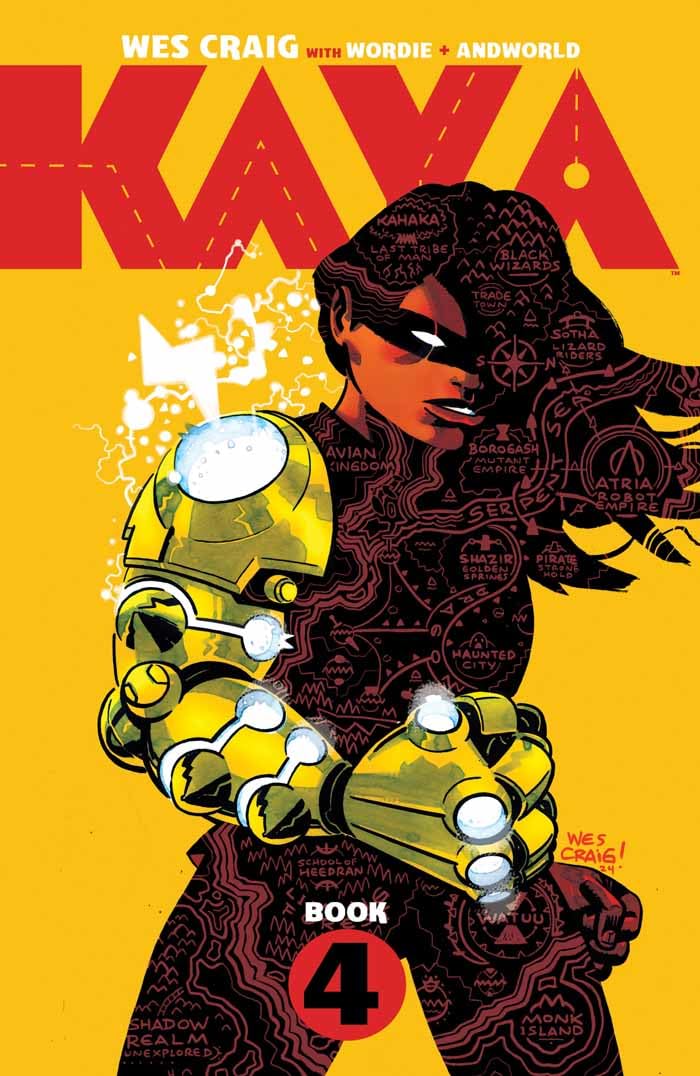
#29) Kaya Vol. 4
Wes Craig’s all-ages fantasy is firmly entrenched among the Image all-timers; at this point the only real question about Kaya is how far do Craig’s plans stretch? Approaching 30 issues, Kaya is one of the sturdiest long-running series in the direct market, all the more impressive considering Craig’s succeeding in a highly saturated fantasy market on the power of design, expert craftsmanship, and completely non-cynical heart. Like Jeff Smith’s Bone, Craig fully gives himself to the journey of Kaya and her brother Jin, navigating an endlessly engaging fantasy landscapes of robots, wizards, alligator-men, trickster-gods, and magical boys with the powers of animal transformation. Alongside Jason Wordie and Tom Napolitano, Craig has crafted one of my favorite worlds in comic books.
The most recent volume of Kaya, collecting issues #19 to #24, reaffirms the book among comics’ best, as Craig’s imagination is freed in the haunted city, allowing for kaleidoscope dream-state layouts and chase sequences involving rabid dinosaurs for the honorary reason that this is comics and they can, dammit! Kaya and Jin’s quest is under constant duress – let these kids catch a break! – and the regular addition here of Razel the Loki-like (ex?) god of tricksters is a more than welcome wrinkle. At some point, I suspect I’ll grow tired of the “Jin gets captured and Kaya must save him” structural cycles, but Craig seems to even notice that here, more likely to move along the rescues as they recur, and seeking to avoid stasis. I can’t wait to see where we’re going next.

#28) El Fuego
I was not familiar with this part of David Rubin’s game. I knew the Spanish cartoonist as the incredible visualist behind collaborations with Matt Kindt and Jeff Lemire (Cosmic Detective, Ether, Black Hammer spinoffs), but not as his own fully formed voice. It’s a trite concern, but the leap from full-time artist to fully-in-control writer/artist leaves many a sure hand collapsed in a pit of bodies who’ve tried and failed. Queue up the standard reviewer’s lament: “It looks great BUT…”
Well, El Fuego, originally released in Spanish in 2022 and now translated to English via Oni Press, looks great AND I quite enjoy Rubin’s apocalypse sci-fi and cultural commentary! Think Armageddon in a post climate collapse world, all through the lens of a rock-star Architect tasked with saving mankind by building a lunar evacuation colony. There aren’t many beats here that truly surprise, but there’s an eccentricity and confidence to Rubin’s storytelling that overpowers fears of been-there-done-that. An example: Of course the moment our protagonist finishes a call from Moon to Earth with his doting wife and daughter, he turns around and cuts up lines of coke for himself and his mistress. I just call this Thursday (nobody send these reviews to my wife, please)! BUT Rubin introduces “kryptocoke,” so that the duo’s eyes turn green, and their bodies emanate emerald auras as they engage in the erotic festivities. And THEN, I won’t spoil it, but Rubin twists the grotesque up a notch, channeling Frank Quitely’s All-Star Superman as written by The Boys era Garth Ennis. It works! (not to mention convinces me there’s a Black Label Superman project just waiting for David Rubin’s pen.)
Over the course of ~250 pages, Rubin plays with a wide variety of craft and ideas, and as you’d expect, some moments work far better than others. There’s a sequence of the kryptocoke leaving our now ruined protag wandering the city streets with his green Doctor Strange astral self lurching out of a husk, as they make their way to a synthetic sex shop from the mind of Syd Mead and Geoff Darrow. For my money, it’s the scene that most effectively captures the fall of the grand hero of mankind, a memorable mixture of seedy, pathetic, gross and sad. On the opposite end of the spectrum, there’s a lengthy mid-work sequence where two characters wander a now desolate Rome and their looooong conversation is spread entirely across double page spreads. The dialog lacks the emotional heft or propulsive force to justify the length, but it’s still fascinating to see how Rubin conveys an extended walk-and-talk without panel borders. I’d argue you need the space to try both scenes, even if I’m admittedly skimming dialog during the latter.
Again, it would be too easy to toss this in the pile of “Great art BUT” comics, and I just don’t think that does it justice. Much like an addict wandering the burning waste of the Earth-that-was, Rubin’s more than capable of surviving on his own (and has been proving that for years, I simply didn’t know!), and I look forward to seeing what tricks are up his sleeve next.
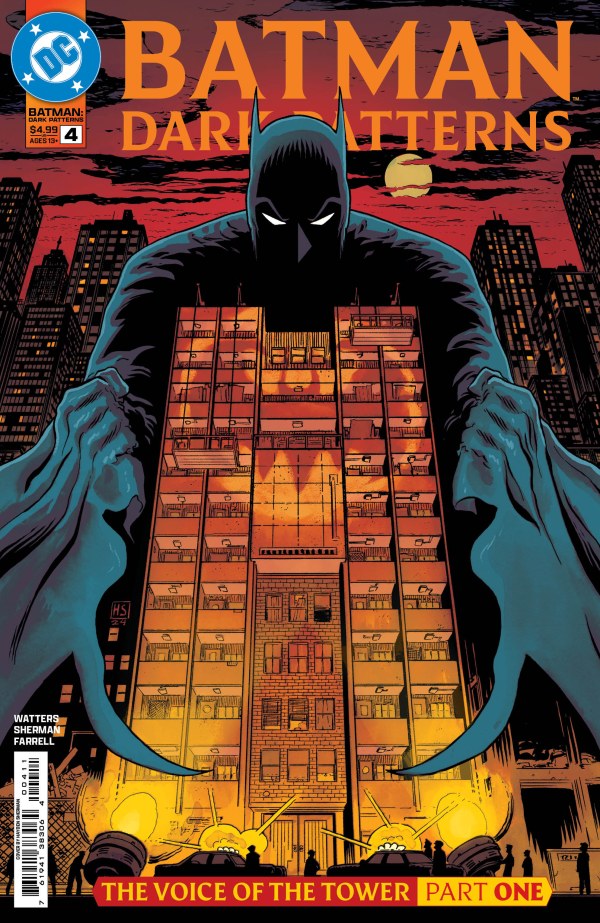
#27) Batman & Robin: Year One + Batman Dark Patterns
Damn it feels good to be a Bat-fan. In 2025 we had Batman stories designed by Nick Dragotta (see Absolute Batman below!), Hayden Sherman, and Chris Samnee. It’s a visual feast for Gothamites, and for my money, the single best year for Bat-comics this decade. It’s such a good year for Batman comics that I’m completely cheating my own best of the year rules and combining two entries into one! Batman would never break his code like this.
In Batman & Robin: Year One, longtime Daredevil Ace creative team Mark Waid and Chris Samnee pull off the remarkable feat of making the first weeks of Dick Grayson in Wayne Manor feel as vital and emotionally resonant as ever. Samnee’s got Mignola’s use of shadow and Mazzuchelli’s soft touch, combined with a sophisticated ease of youthful expression (just see Jonna and the Unpossible Monsters) that makes him a perfect fit to capture this era of the first Robin’s highs and lows. Waid’s been on a successful nostalgia tour at DC this decade, and with Samnee, this Year One is my favorite of Waid’s 2020s output.
Catch me in the right light and I’d probably admit Batman: Dark Patterns by Dan Watters and Hayden Sherman is my actual favorite of the bunch. Sherman is on an absolute tear this year – alongside work on Absolute Wonder Woman and Into the Unbeing – with an unrivaled contemporary eye for page design and landscape perspective (I haven’t felt like I was actually falling through Gotham like this since I got motion sick 10 minutes into playing VR Arkham Shadow). Triona Farrell’s colors are particularly well-suited for Sherman’s sensibilities, sometimes in wonderfully surprising ways, such as a brighter hue of pinkish-blue flame as the face of The Child of Fire menacingly stares out a burning building window. In a year of Bat-art riches, Dark Patterns sits atop the pack. Dan Watters is perfectly positioned to write the post-Pattinson era revisit of Batman’s early detective work, avoiding the obvious rogues gallery players (Scarface is the only known quantity, but successfully reimagined) and bringing the macabre understanding of Gotham honed on Arkham City to this generation’s Batman: Long Halloween.
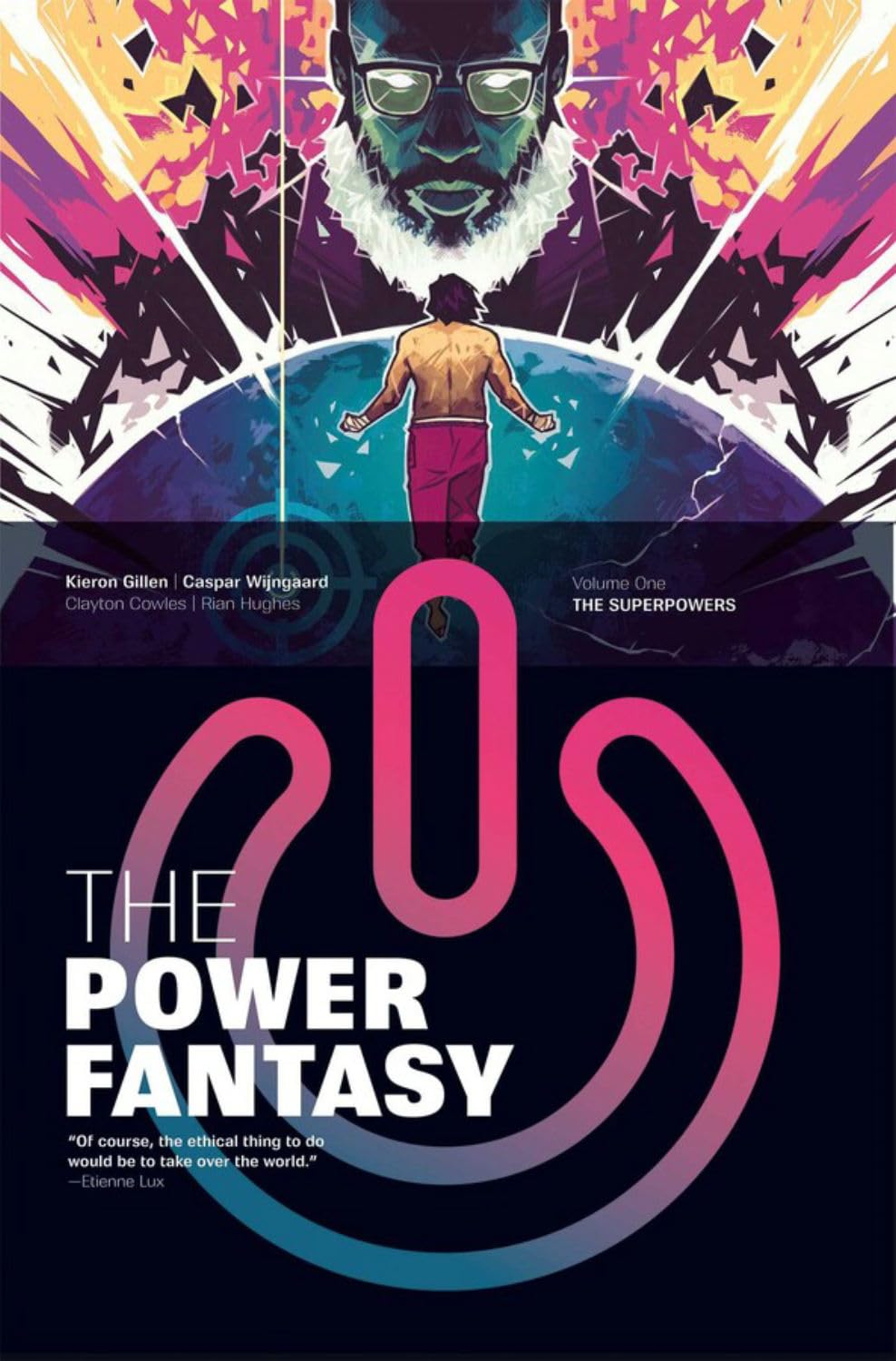
#26) The Power Fantasy
The Power Fantasy is a book that invites – perhaps demands – *takes*. From creators Kieron Gillen, Caspar Wijngaard, and Clayton Cowles, this is Gillen’s attempted apotheosis on superheroes, after over 15 years in the trenches, and fresh off best-in-franchise work on Marvel’s Eternals and saved-the-franchise-from-heat-death work on Immortal X-Men. There are six superpowered individuals, each posing the weight of a nuclear arsenal, and this is Gillen’s post- post-Watchmen commentary on the ways the global-political landscape would be upended in a world where an all-powerful telepath could wipe out the U.S. government with a thought.
Hey, you don’t invoke the name of Dr. Manhattan if you don’t think you have something big to say.
I’m a post-Marvel Round 1 Kieron Gillen convert, as high on his stretch from 2018 to present as anyone. Personally, I think the run from Peter Canon: Thunderbolt, Die, Once and Future, Eternals, and Immortal X-Men is among the best Direct Market comics of the last 7 years (that caveat isn’t really a slight; I just don’t want to sink into the quagmire of considering pure graphic novel book market work from the likes of Emily Carrol or Chris Ware!). So, while I am primed to follow a work that is Gillen’s reaction to writing X-Men without the restrictions of corporate-ownership, familiarity and praise also breeds expectation. I *want* The Power Fantasy to be my new favorite comic, which is a dangerous bar to place.
Let’s start here: This book is HIGHLY ambitious, eminently critiquable, and I did not want to put it down! After Peter Canon, Wijngaard’s no stranger to superhero commentary, but it was on Homesick Pilots where I saw the artist’s ability to blend character acting and stylized chromatically surreal backgrounds in a way that felt genuinely fresh (you can pretty quickly recognize a Wijngaard page by an analogous palette of pink-purple-blues popping off every building and background). Over the course of 5 issues, Wijngaard is tasked with bringing these Superpowers (the Atomics as they’re known) and their supporting pals to life as if we’ve lived in this world where it’s impossible to have missed them. In his way, he’s successful, if not as instantly defined as Jamie McKelvie’s Lucifer or Baal from Wicked+Divine (there are entire critical companions to be written about Wic+Div vs. the Power Fantasy). It takes all five issues to clearly define the players, which is no small wonder considering the way we open en media res and are asked to puzzle out the contours of the Atomics ourselves. The cut and paste effect of characters that look like they were chopped out of magazines and glued over Wijngaard’s backgrounds can be offputting, although I’d argue this faux-collaging is an effective part of the book’s DNA as it progresses. Chapter four’s focus on Masumi’s Void-esque darkzilla highlights Wijngaard’s full potential, with gorgeous teases of an ultimate world-shattering monster lurking beneath this young depressed artist, and assures with conviction that Wijngaard is *the* artist to pull this off.
The weight, then, falls on Gillen to pull off his version of superheroes integrated into world history. I’ll eagerly be reading where Etienne Lux’s “ethical” telepathic murder gets him (if you want a clue that Gillen’s working out some leftover X-Men feelings, look no further than the “oh golly, sure wish I didn’t have to use my mind powers this way!” focus on Lux). I want to know more about the all-powerful, perhaps literally angelic might of Valentina, or the weaponized right-wing militant magic of Jacky Magus. But on the other hand, I remain unconvinced that a work so geo-politically concentrated can dig any deeper than through the topsoil. Valentina is born at the exact moment of the first atomic blast in 1945, and the history of the Atomics is all *very* directly tied to historical moments. (When I was in college, I wrote a novella, clearly ripping off Salman Rushdie’s Midnight’s Children, that began with a junior high author stand-in hooking up behind the bleachers for the first time and orgasming at the exact moment of 9/11. Superpowers followed. It makes me wince to share that with anyone, but it’s also a massive red flag that I’m seeing parallels!)
Ironically, for a work that seeks to upend the tropes of cape comics (we solve issues with words, or at least fistless violence!), it still generally functions best within those parameters. As a creator who has thought deeply about the possibilities, limits and potential of the genre, this is where Gillen excels. And realistically, I’m ready and willing to cruise alongside “Heavy” as a Magneto stand-in, floating in his island for Atomics, without Marvel editorial breathing down Gillen’s neck. The Power Fantasy is still best sold – to my mind – as Gillen’s post-IP reaction to how we make superhero comics. But with a work wearing its ambitions so nakedly, and during such a decidedly political *moment*, with a world screaming on fire, there’s real pressure for insight and precision. We are talking here about the dangers of world superpowers without affiliation to the nation-state – how much world history do you keep, and how much do you completely rewrite in such an environment? The answers are still unclear, and are essential to the work succeeding as alt-history.
Listen, these are the thoughts and questions of someone two volumes into a run built for the long haul. I was skeptical, frankly dismissive of Wic+Div until I read it as an integrated whole as well. I’m also confident the story so far doesn’t accidentally cap at 1999. There’s a LOT more story to be told, a LOT more world to build, a LOT more to say. I’m excited about creators that want to try and say it, despite, well, *gestures at the 2000s*. That’s the kind of ambition I want from all my favorite comics.

#25) Gaza in My Phone
For 120 pages, Mazen Kerbaj holds up the horrors of Gaza and the ongoing slaughter, one brutal political cartoon at a time. Kerbaj is a Lebanese cartoonist and musician, born in Beirut, and tackles the complexity of Gaza with clear-eyed humanist simplicity. Sometimes Kerbaj simply states a factual detail so horrifying it leaves me nauseous – a doctor amputating his own son’s leg without anesthesia, and his son dying during the operation – and sometimes the page is boiling with rage, tears and righteous indignity – “They cannot silence us all”. For the duration, Kerbaj makes one demand of his readers: Don’t look away from the horror. Don’t get used to it. This cannot stand.
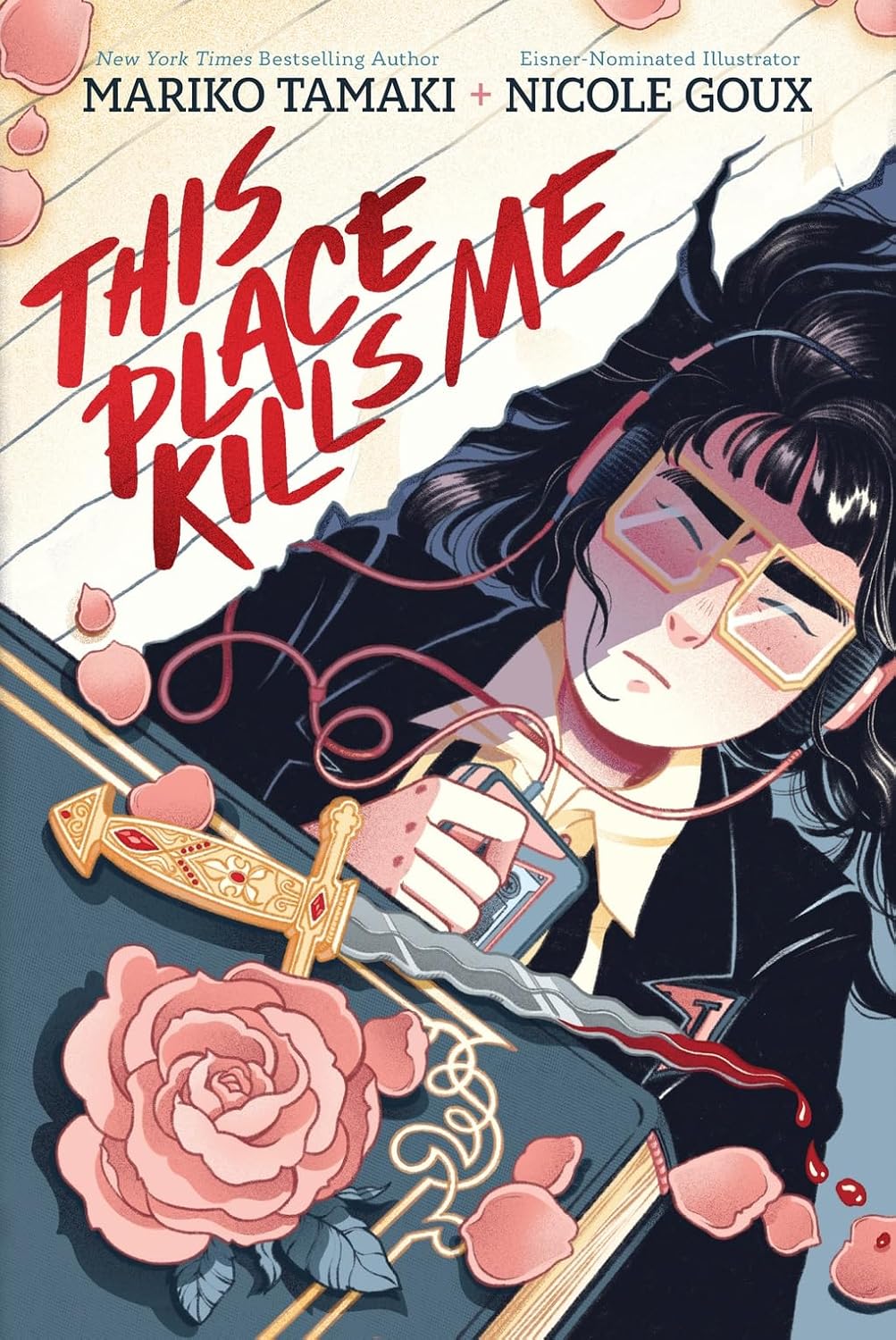
#24) This Place Kills Me
I’m starting to think the Tamaki’s might have had complicated high school experiences. This Place Kills Me joins writer Mariko Tamaki’s resume of instant classic teen dramas that includes This One Summer, Laura Dean Keeps Breaking Up With Me, and Roaming, this time out with Nicole Goux. Whether it’s with her cousin Jillian, Rosemary Valero-O’Connell or now Goux, Mariko Tamaki writing a new graphic novel is one of the surest bets in comics, particularly if you enjoy emotionally fraught teen dramas with captivating queer leads.
This Place Kills Me is told at an all girl’s prep school, where the newcomer Abby Kita stumbles upon a murder mystery that spirals into a larger school conspiracy among the Wilberton Acadmey drama society. The infusion of Nancy Drew genre into Tamaki’s now familiar skill building character and navigating sexuality is welcome, with just enough red herrings to keep the death of the story’s Juliet up in the air throughout. The lead Abby Kita, new to this school, ostracized and bullied, is arguably my favorite new character in a now loaded bibliography, and Goux is the perfect collaborator to bring her to life. Goux is a trained expert at character acting, with an innate understanding of just the right amount of orange-pink blush to add to cheeks to convey romance, embarrassment, and teen angst. Goux’s palette and approach is less splashy than Valero-O’Connell’s starmaking turn on Laura Dean (for my money, still the best of a great crop), but this duo is adept at playing to each other’s strengths to create a near 300 page work that never falters.
This Place Kills Me works as a standalone, but it also opens the door for an ongoing series of mysteries in a way Tamaki’s previous non-DC work does not. Hopefully, the work’s inevitable position among many critical year-end best of lists ensures we’re on our way to This Place Kills Me Too.

#23) Baby Blue
I’ve been on a Smashing Pumpkins kick lately, obsessed with compiling a playlist of Siamese Dream-esque songs (if you have recs, send ’em my way!). As they’re among the bands most firmly rooted in my junior high/high school nostalgia (I think the top of the list is Linkin Park, Sum 41, Tenacious D, Green Day and Styx (thanks, Dad!)), certain Pumpkins songs have a unique ability to transport me. This happened as “Today” hit my headphones in the midst of a basketball warmup, and suddenly I was 13 years old, riddled with anxiety about an upcoming game and either ready to jump through the roof or curl into a ball and rock on the floor.
Imagine police were looking for that mental distress on my face, and able to confiscate my emotional music, and you’ve grasped the foundation for Bim Eriksson’s Baby Blue, a new graphic novel out now from Fantagraphics. The work begins with our lead character, Betty, obtaining an iPod full of banned music (after all, no mentally healthy person is listening to Morrissey!) from a suicidal contact. Betty’s emotional stability wavers on a paper-thin edge, and she’s instantly approached by police and placed on a watchlist when this event brings her to (fairly reasonable!) tears in public. This is a Sweden where happiness or at least contentedness is demanded at all times, and the mentally unfit are taken to clinics for medical course correction. It’s satirical commentary on how societies treat those who march to a different drum, but it’s also resonant predictive text. The best satires always carry just enough reality.
Eriksson’s cartooning is surreal yet consistent, with hollow eyes, elongated limbs (every character’s legs go ALL the way down to the floor), and disproportionately square shoulders. It’s a realistic dystopian future, but with elements of absurdity melded to its core. What’s fairly remarkable is that Eriksson is regularly able to convey subtle emotional shifts via facial tics and character interactions, even when animal masks and alien body types are involved. Your mileage will undoubtedly vary on the stylistic approach, but the idiosyncrasies never impede narrative. For my money, they give it life.
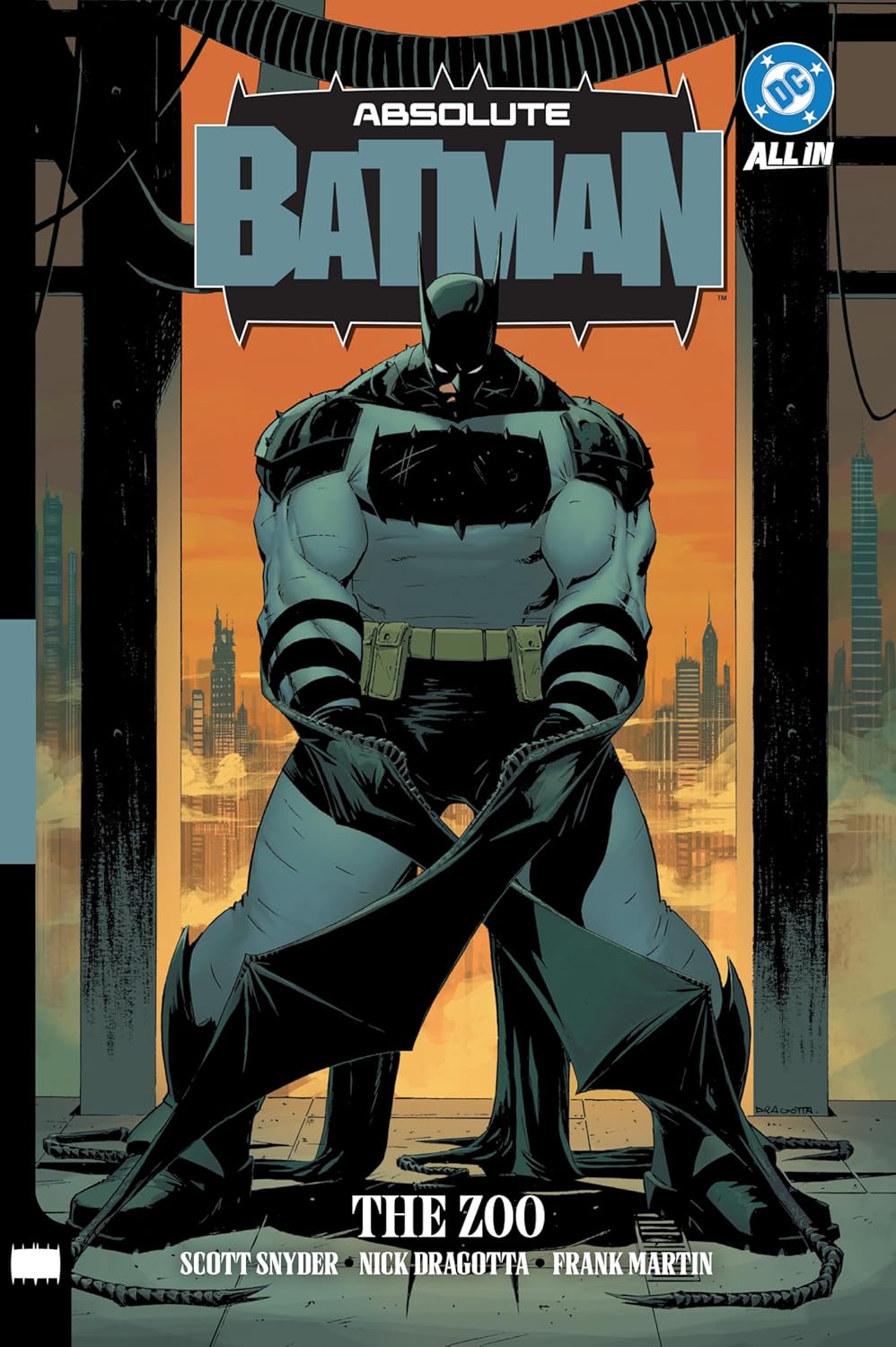
#22) Absolute Batman Vol. 1: The Zoo
I will admit to real trepidation with Absolute Batman, almost entirely centered around the fact that Scott Snyder already had his successful run on the character. The history of superhero comics is not exactly littered with examples of creators coming around for second and third at-bats after first-time-up home runs. The most notable exception is Frank Miller on Daredevil Born Again, but the most notable cautionary tale is Frank Miller on Batman. So it would seem the bar is one of the best Marvel Comics of all time, or “I’m the Goddamn Batman.” High risk, high reward!
The problem isn’t really that Snyder already had a five year run on the Bat with Greg Capullo, it’s that he so fully and thoroughly seemed to exhaust his DC Universe mastery through his run on Justice League, DC Metal, and Death Metal. This is a writer who spent the 2010’s going from Court of Owls to Jim Gordon in a BatBunny RoboCop Mech to The Batman Who Laughs. What more does he have to bring to Gotham?
The answer, somewhat surprisingly, is some really cool friends. It’s not like Snyder didn’t know how to collaborate with the likes of Capullo or Rafeal Albuquerque on American Vampire, but Absolute Batman is so decidedly committed to honing the artistic storytelling vision of Nick Dragotta, you’d be mistaken for tuning out and wondering if you’d accidentally slipped East of West of Ghost Cage somewhere along the road to Gotham. As if that wasn’t thrilling enough, when Dragotta needs the kind of break the American Comics Industrial complex demands, Snyder is there alongside Gabriel Walta and Marcos Motherflippin’ Martin for three of the book’s first 8 issues. That’s like getting to sub in Luka Doncic when Lebron gets hurt (what’s up Nico!).
Having ceded control in all the right ways, Snyder’s “hook ’em horns” metal-dad moments, falling so aggressively short in the pages of Death Metal, all hits with exactly the desired impact. With the exception of one big TBD reveal (Absolute Joker is an absolute wild card!), when Snyder and Dragotta pace a “moment” it thumps into your chest like a teammate screaming “LET’S GOOOOOO!”. Dragotta’s Bat is CHONKY, the kind of gym-bro who can’t lift his arms above his head but hasn’t missed a day in 14 years. He’s less tactical brilliance and more brute force, less Midnighter and more Big Barda, less batarang and more a Bat-Axe that shoots MORE LIL BAT AXES. And Snyder’s absolute inversion of Bruce’s origin hits; he loses his father to gun violence at the zoo during a class field trip. The point here isn’t to be subtle; Absolute Batman is about as subtle as a hammer to the chest. The point is to resonate, and right now, here in this moment, this is the Batman Gotham needs.
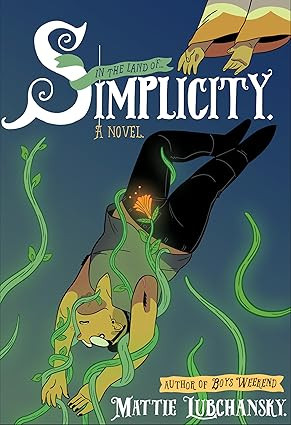
#21) Simplicity
Imagine an unapologetically trans/genderqueer Futurama and you’re about a third of the way to the dystopian future satire of Mattie Lubchansky. Hot off 2023’s Boys Weekend, Lubchansky’s next Pantheon Graphic Library addition is an even bigger swing, a concerningly believable depiction of what’s left of America in 2081, following a New York scholar, Lucius, attempting to understand the off-the-grid city of Simplicity. In Simplicity, Lucius finds a society well outside the norms of the city-territories, with seemingly cultlike rituals of nightly violence and orgy, and a collectivist approach to their unlikely survival. As Lucius begins to fall for Simplicity’s lifestyle (as well as the charismatic Amity), his fact-finding research is revealed to be a ruse for developers to destroy Simplicity. And that’s when the monsters arrive.
Lubchansky’s an excellent cartoonist, crafting instantly compelling world design with an economy of line, and able to sell a character’s look of desire with tremendous ease (whereas when I try to sell this look irl, I just look like I’m about to sneeze). As the work develops, Lubchansky also gets to show off their monster designs, with translucent nightmares made entirely of eyes, mouths, zippers and Mysterio fish-bowls. It’s an eye-opening balancing act as Lubchansky alternates between erotica, supernatural thriller, and laugh-or-you’ll-cry satire.
Without spoiling anything, the third act very effectively seals Simplicity’s “point,” in intensely recognizable ways. It’s an emotional and powerful conclusion to another stellar work from Lubchansky.
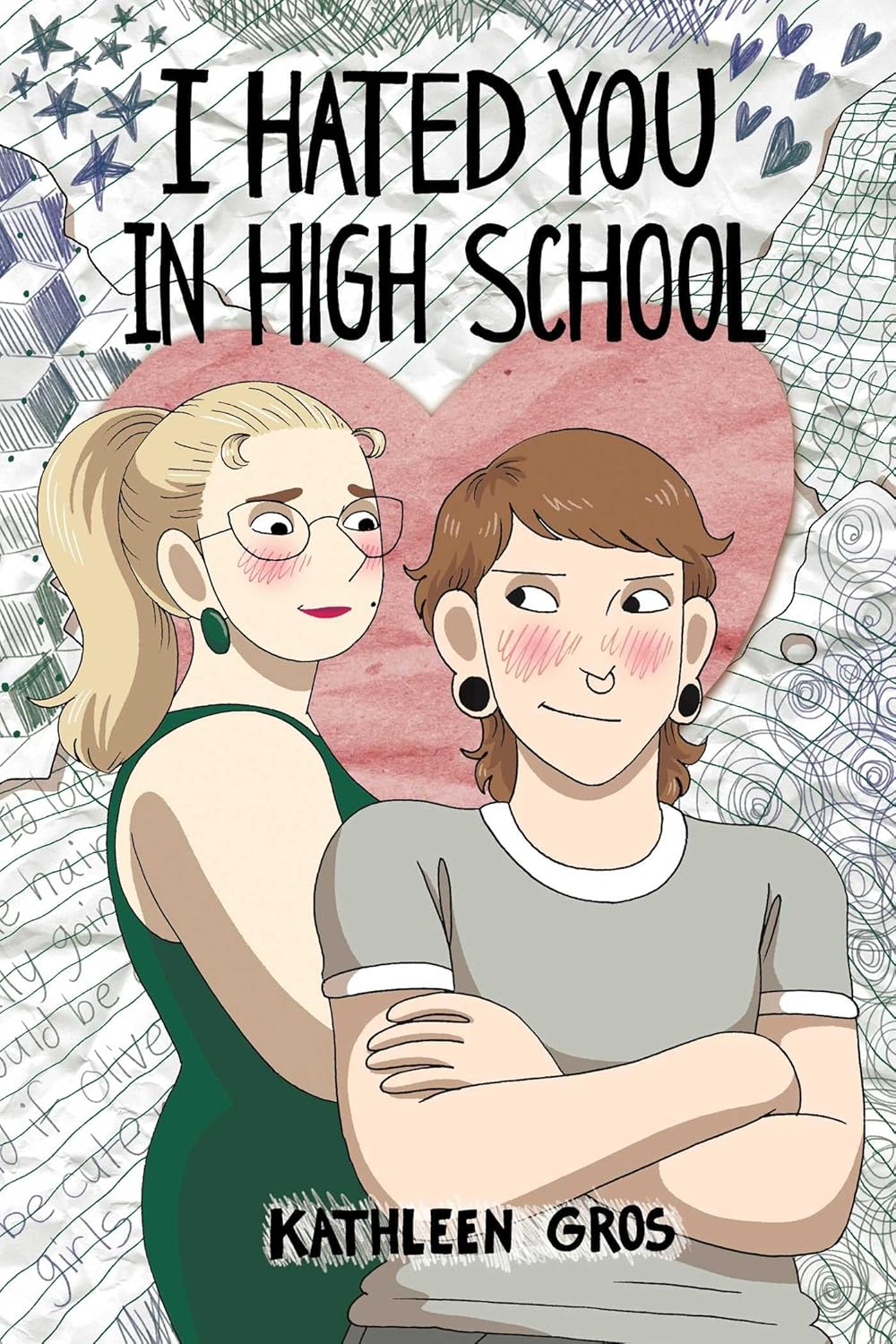
#20) I Hated You In High School
In the supreme parallel universe where queer relationships are accepted and celebrated for all that they are, I Hated You In High School would make perfect romcom material, like an A24-elevated Hallmark movie. Kathleen Gros is exceptionally gifted at selling the expressions and body language of the 20-somethings in this narrative, filling every conversation with heart, humor and authenticity. The graphic novel about a struggling cartoonist visiting home and confronting her high school nemesis is so lived-in that I just assumed we were dealing with autobiography until it occurred to me to actually check (unlike Queen’s Gambit, this did not turn my world upside down when I realized it was (mostly) fiction!).
Even some of my comics pet peeves – the dreaded extended flashback sequence! – are buoyed with smart interjections that keep the work light on its feet (Tessa’s bestie hitting her up with a “BUDDY” after a particularly revealing high school diary story). It only takes one look at the cover of Tessa and Olive standing next to each other blushing (comic’s universal signifier for CRUSHING) to know where this is going, which honestly leaves me more in awe of Gros’ execution. The journey of Olive and Tessa coming to terms with their feelings, and with teenage bullying is engrossing all the way through, setting the stage for an incredibly sweet romance. Somehow Gros even finds time to bake in a subplot about Toronto’s creeping gentrification. Excellent work all around.

#19) The Fables of Erlking Woods
Juni Ba is one of my favorite comics creators of the 2020s, so it didn’t take much convincing when I saw he was Kickstarting a new comic with Aditya Bidikar (who lettered all your favorite comics that Hassan Otsmane-Elhaou didn’t). I am of two minds with comics Kickstarters. On one hand, I don’t want to do any work to keep up with them (release your books to the masses you tyrants!), and I’ve mostly resisted the cycles of Kickstarter PR that demand you interview subjects about a work that… doesn’t exist yet! On the other hand, this inevitably means the moment I find out I missed a Kickstarter Comic, I get overwhelming FOMO (fear of maternal ostriches… I’ve been bitten before. Never again.) So naturally, I wasn’t going to let The Fables of Erlking Woods slip through my fingers. Between Djeliya, Mobilis, Monkey Meat, and The Boy Wonder, Juni’s pretty much a lock for best-of-the-year consideration.
Fables is no exception, and perhaps a needed reminder that the world is full of comic book storytellers fascinated by exploring the nature and power of stories. The book is broken into “branches” of separate yet converging fables, allowing Ba’s Mignola by way of cartoonist growing up on Samurai Jack style to effervescently float out of anthropomorphic and human tales from medieval times to World War Two. Bidikar proves endlessly versatile, shifting lettering to match tone and temporal jumps, most notably to me during a surprising black-and-white 80s diary turn in the book’s back half. The emotional core of Fables is reminiscent of threads in Ba’s other works (particularly Mobilis, or The Unlikely Story of Felix and Macabber), exploring how past traumas drive isolation and festering jealousy-laced anger. It’s the confidence and immediately recognizable style that pulls in new readers, but Ba’s writing is increasingly therapeutic, navigating a rare willingness to look inward and bare fears of self-loathing most would prefer to keep bottled up. The Fables of Erlking Woods doesn’t pass Mobilis as my favorite of Ba’s work, but it doesn’t need to enter into a rapidly expanding bibliography of essential reads.
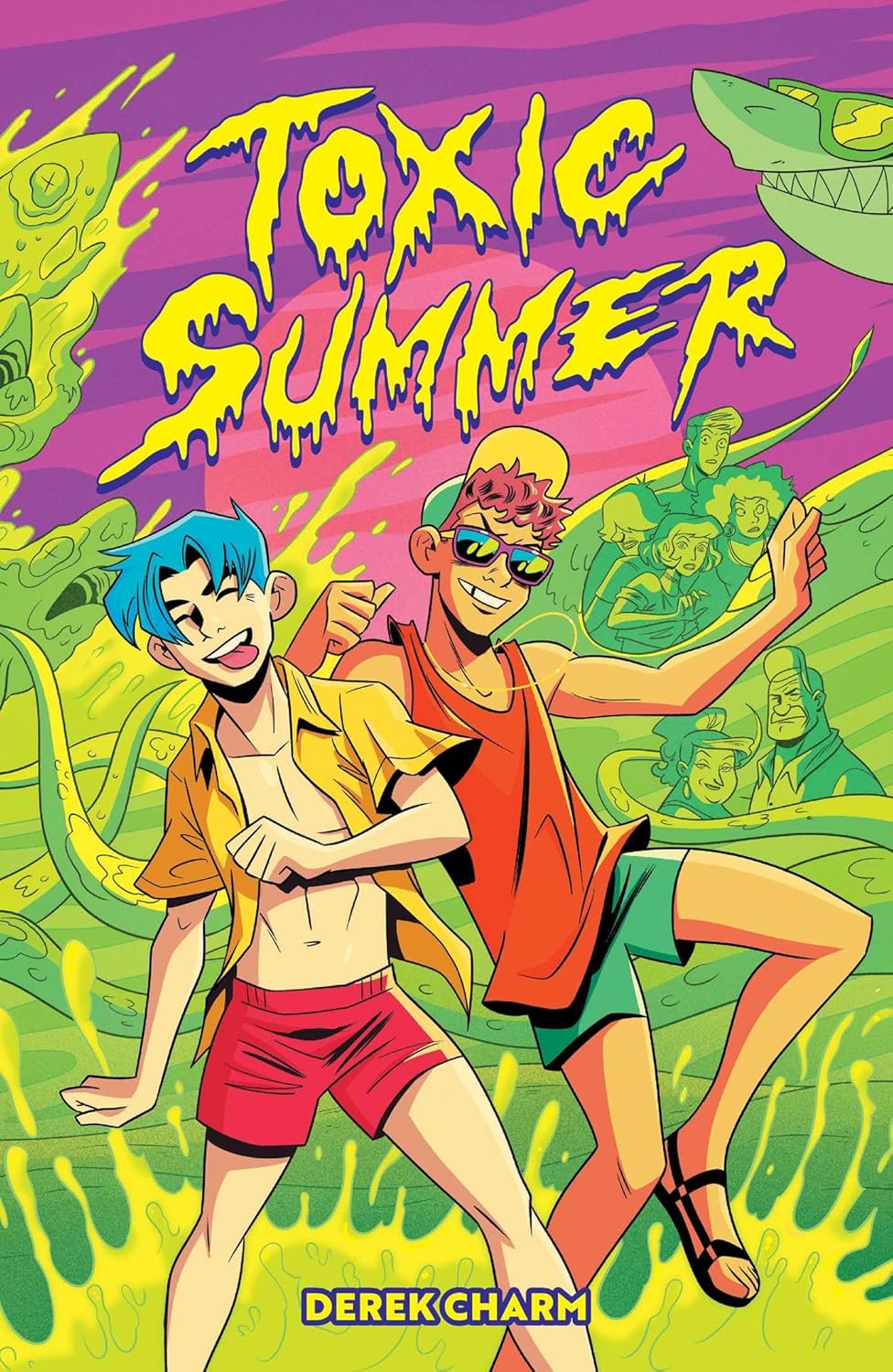
#18) Toxic Summer
What a delight. I wasn’t quite sure what to expect from Derek Charm’s three-issue teen-comedy, but Charm puts those Jughead and Unbeatable Squirrel Girl lessons together to form one of the funniest, sweetest YA graphic novels of the year. Toxic Summer is the story of two queer teen friends who plot for a summer lifeguarding horny beach hunks (a kid can dream!), but wind up embroiled in a small coastal town overwhelmed with mysterious, supernatural toxic sludge. It’s a classic teen-summer misadventure with a good ol’ Comics^TM twist.
Charm’s characters are shockingly well developed given the space, clearly building genuine laugh-out-loud moments and budding romance in the span of a mere 100+ pages. Honestly, the slice-of-life portrayal of 6 teens stranded in this dead, beachless town is compelling enough that Charm doesn’t really need the Black Lagoon meets Clayface monsters that drive an overly familiar plot. Charm’s swirling dark neon greens are a thrill to look at, but the moments Toxic Summer lost me are some needless and trope-y moments of exposition (although even here, Charm sneaks in humor from his, well, charming cast). All of which is to say, I’d love to just hang with these characters for a summer. Bring on volume two, perverted hunks, and “some” sharks!
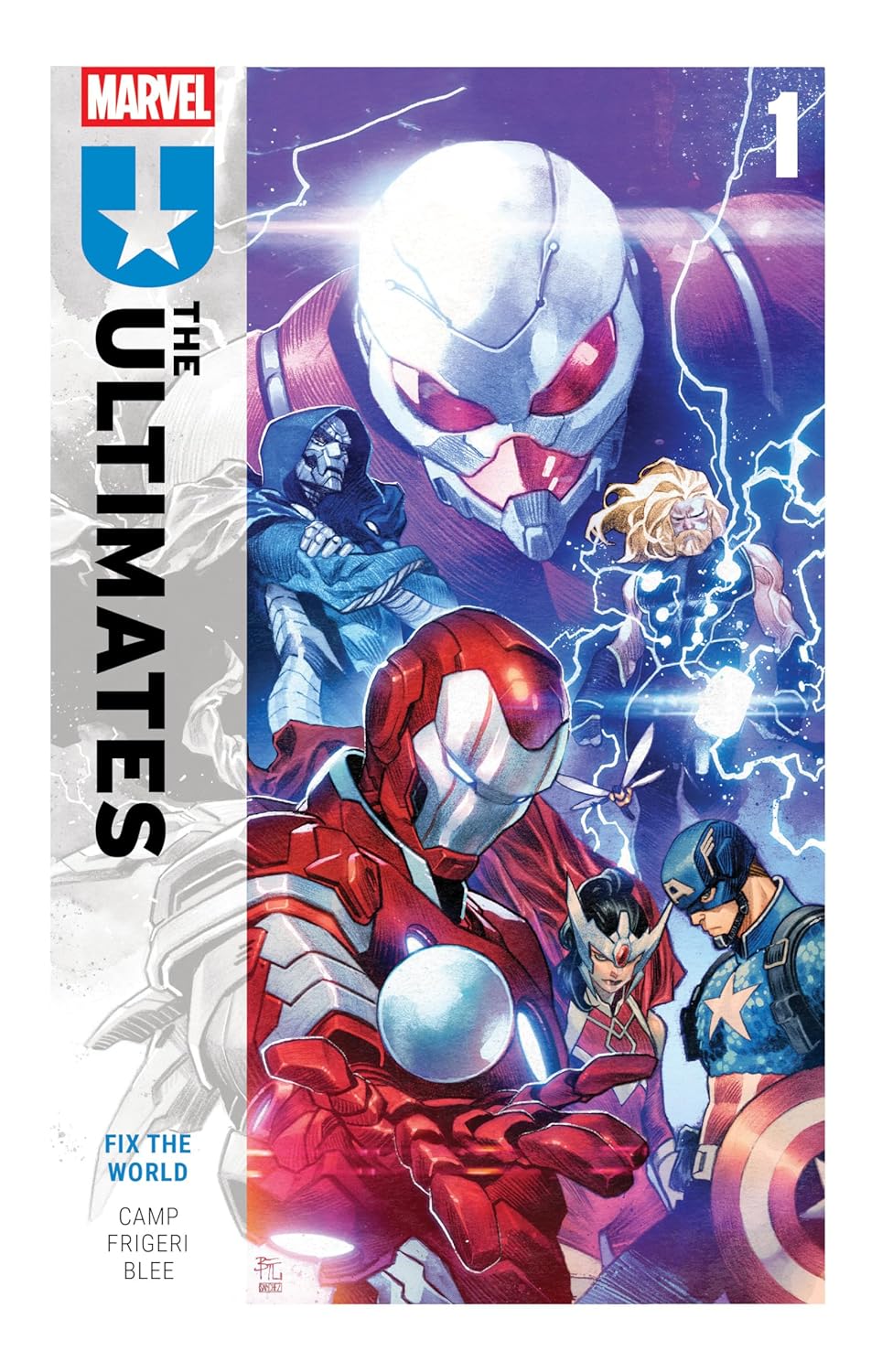
#17) The Ultimates
Deniz Camp and Juan Frigeri’s Ultimates shows a desire to elevate superhero fiction with political and social commentary ingrained in every fiber. I was already an Ultimate 2niverse convert through Hickman/Checchetto’s Ultimate Spider-Man and Momoko/Davvison’s Ultimate X-Men, but it’s Ultimates that lifts the new universe to heights where, were it not for Ryan North’s excellent 616 Fantastic Four, the original Marvel Universe would be completely obsolete.
In the vein of Victor LaValle’s work on Sabretooth, Camp combines Hickman’s House of X data page insertions with historical lessons melding real history with Marvel Comics. Much like a pill mashed into dog food, Camp tricks us into learning about Pacific Island colonialism, the dark history of American atomic testing, and mistreatments of indigenous peoples, all while seamlessly integrating these histories into the introductions of the universe’s new She-Hulk and Hawkeye. It’s not a surprise that the writer of 20th Century Men would have a clear point-of-view on an Ultimates unit that has been branded “terrorist” by the Maker’s controlling council, but the sheer confidence of mashing message and Marvel makes it look almost too easy. This Ultimates – my favorite Ultimates in Marvel’s history, for the record (with shouts to Al Ewing’s great 616 work!) – raises the stakes for anyone writing superhero comics, and makes the bulk of the field look factory-produced and uninspired by comparison. The mainstays have to be lying awake at night cursing Camp’s name.
All of this overshadows the other secret ingredient of The Ultimates: It knows how to lean into what makes Marvel Comics great. Which is another way of saying: Uh, The Hulk has the power of Iron Fist and the Immortal Weapons by his side!
Predictably, The Ultimates has had missteps, but even so, this level of ambition and skill is everything you could ask of a new flagship superhero team book. The only limitation – which is exacerbated by Nick Dragotta’s performance on Absolute Batman and Hayden Sherman’s on Absolute Wonder Woman and especially by Camp’s work with Javier Rodriguez on Absolute Martian Manhunter – is that Frigeri and Federico Blee have not yet coalesced into a standout visual storytelling unit. Indeed, the most memorable visuals from the run to date are Phil Noto’s guest pages in The Ultimates #4, the story of Ultimate 2niverse Reed Richards, turned into a Doom by The Maker (in a story told entirely through 4-panel pages running on different timelines! Comics! Hell yeah!). Nonetheless, this Ultimate Universe is quite clearly in Camp’s more than capable hands, which is a big reason why it’s among my favorite thing happening in superhero comics in 2025.

#16) The Sickness
On a number of cool people’s favorite 2024 comics lists, The Sickness is Lonnie Nadler, Jennie Cha and Hassan Otsmane-Elhaou’s black-and-white horror comic from Uncivilized Books, straddling two time periods, 1944 and 1954. The work follows the developing psychosis of a teen boy who believes he’s being followed by a shadowy figure, and begins seeing increasingly horrifying visages of twisted, monstrous faces everywhere he goes. A decade later, a psychiatrist finds a similar pattern of haunting mental illness following a woman’s murder of her own family. Both converging narratives feel heavily researched and immersively reflective of that period’s Americana, from the obvious (the announcement of America’s use of nuclear force on Hiroshima) to the minute (Hank Greenberg baseball card taped to a bicycle wheel).
Cha’s detailed lines, evocative expressions, and terrifying melting puddles of flesh all scream “don’t read after dark,” with an attention-to-detail and craft that at least enters the conversation with Barry Windsor-Smith’s Monster. Truly, this is top tier artistry, carefully orchestrated “every page a painting” energy, with Nadler channeling the structural ambitions of a young Alan Moore to ensure Cha’s bottom right panels neatly seque into the page turn’s top left. As the world’s most famously frightened comics critic, one of the few things that get me to risk getting spooked is a creative team with vision for miles. And boy howdy, talk about vision!
The Sickness beautifully blends unsettling tension and freakout explosions, paced patiently and steadily through the works first six issues. It’s also impresively captivating for a work this dense – this isn’t a comic to casually flip through in the back of the stacks before the clerk notices you’ve been sitting cross-legged for over an hour (just me?). It’s one thing to *want* to set out to make an instant classic; it’s another thing entirely to have the damn juice. I’m very excited that the work promises to continue, with the option to subscribe to issues #6 to #10 already available on Uncivilized’s website.
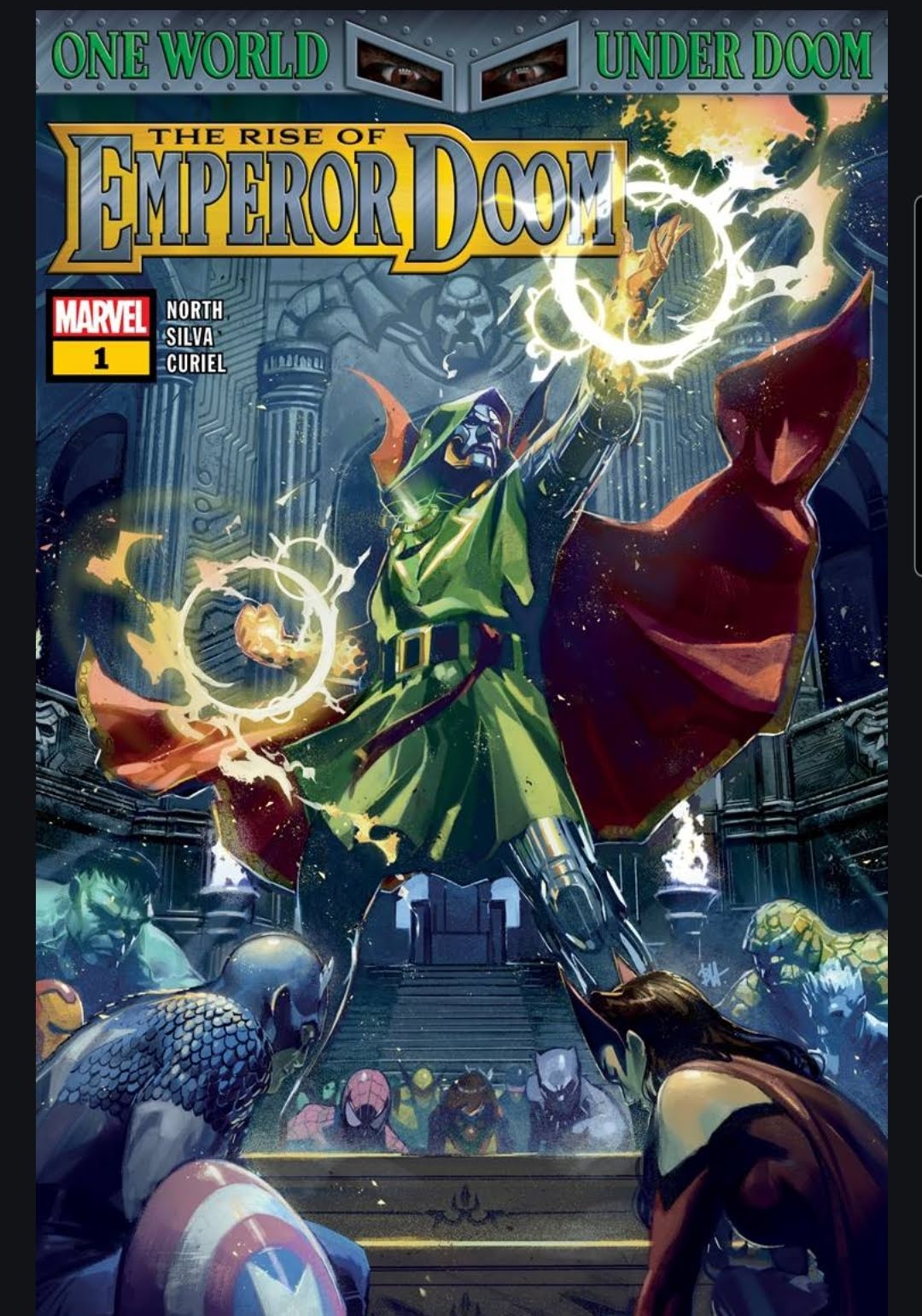
#15) Fantastic Four by Ryan North + One World Under Doom
I am in awe of Ryan North’s work on Fantastic Four. It’s not like I didn’t think highly of North before, but I wasn’t aware he had “possible 2nd best Fantastic Four run of all time” in his bag. And dear readers, through 33 collected issues, and One World Under Doom, the Marvel event of 2025, we are in “possible 2nd best Fantastic Four run of all time” territory. (Which means, yes, passing Hickman and friends.)
It’s easy to identify the one-and-done contained single issue approach as FF’s unique calling card, but it’s not as simple to identify why one-and-dones went out of style with flowers in your hair. While some of it boils down to the episodic possibilities of shared continuity and the realization that “Hey, I think they’re gonna keep publishing these fellas in tights long after I’m gone,” there’s also a simple modern truth: It’s hard as hell to write a fully contained superhero comic in 20 pages. That means every month there’s a brand new adventure, a brand new twist on sci-fi, and a brand new reason to fall in love with Reed, Sue, Johnny, Ben and the whole extended family. Sometimes it’s the Fantastic Four transported to an alien world where Johnny finds true love with a Squid-like alien, sometimes it’s Reed and Johnny egging each other on until they’ve unleashed supernatural ghost forces only a magic skull vomiting blood can stop, and sometimes it’s Ben, Sue and She-Hulk trying to spend a day about town ignoring that Doctor Doom has taken over the world. These are each full, individually satisfying meals in a way that frankly no other superhero comic today achieves.
In all iterations, it’s everything Fantastic Four was ever meant to be.
On the other hand, One World Under Doom is the superior modern remix of 1987’s Emperor Doom graphic novel, solidifying Doctor Doom’s standing as supervillain GOAT and interrogating our world’s open relationship with tyrannical fascism. Marvel events are a tough sell, and I’ve never been less interested in Earth-616 as a whole than in 2025, but even through the inevitable status quo reset, I respect North and artist RB Silva’s ability to avoid the easy outs, and to at least try to make the event unlike all the others (it’s quite reminiscent of Kieron Gillen’s Judgment Day in that way, with the unbeatable bonus of a central focus on DOOM). When I think of Marvel Comics in 2025, it’ll be the Ultimate 2niverse, and North’s FF and Doom.

#14) The Ardent
Fieldmouse Press got my attention early in 2025 as one of the first publishers to publicly discuss the impending, disastrous impact of the Trump Tariffs on their comics publishing plans. Through some combination of Trump’s chaos and paper prices remaining consistent, the emergency was temporarily subdued, but fortunately all the hubbub made me aware of the publisher fundraising their 2025 Winter catalog (they also publish SOLRAD, the very good online literary journal for comics). Thus began my descent into crowdfunding 98% of cool comics projects announced in 2025.
Carl Antonowicz’s The Ardent is among the 5 Fieldmouse offerings, and the hardcover latidunal story of a mute monk’s journey towing the bones of a Saint from one monastery to another is worth the price of admission alone. The monk’s journey is effectively broken into three encounters with a warrior reduced in station, a rambunctious child abandoned by his mother and father, and an older woman who purports to know the true history of this monk’s “saint.” The underlying theme of each chapter is a total rejection of fairytale endings in favor of the cold pragmatism of this earth. Each meeting threads the fine line of endless failures with a dark humor, that escalates with each human connection until the work’s final explosive conclusion.
In short, Antonowicz has crafted a riveting fable, confidently sketched and toned through sky-blue water colors and nostalgic reds for the various flashbacks. It should come as no surprise in a work with a mute lead that much of the narrative rests on a clearly communicated variety of facial expressions, and Antonowicz proves up to the task. I loved reading this work, but I’m most impressed by the way Antonowicz flirts with some really dark moments – I’ll never forgive that sweet boy’s parents, and the saint’s true backstory is brutally violent – but then balances a comedic whimsy in a way that doesn’t feel like tonal whiplash. Like many journeys in life, the monk’s final confrontation is both funny, sad, and fruitless! So it goes.

#13) Holy Lacrimony
I don’t yet have any Michael Deforge comics listed among my 500 favorites of all time, and it’s not for lack of trying (I’m sure he sleeps just fine!). The critically-acclaimed cartoonist has been an indie darling for well over a decade now, but frustratingly, I couldn’t find my road in. It’s been a bit like like listening to praise for Black Midi, appreciating where it’s coming from, but knowing that their math-rock signatures lack the pop sensibilities my brain requires to hit the dopamine receptors. I get why you snobbish intelligentsia enjoy these comics; but for Odin’s sake, where’s the story!
This changes with Holy Lacrimony, Deforge’s latest graphic novel out now from Drawn & Quarterly. The first half of Holy Lacrimony is an alien abduction of the “saddest person on Earth,” a reasonably well known musician named Julie, taken to space for a study of sadness. The premise and execution are reminiscent of Kurt Vonnegut’s Tralfamadore, delivered through Deforge’s patented abstractions and supremely confident pacing, a perfect blend to make an alien race feel well and truly alien. We meet an alien who simply wants to learn – or at least learn how to mimic – Julie’s deep depression, despite a life that is empirically just below average. The “abduction” is strange yet incisive, darkly humorous and sexual amid Deforge’s captivating, twisting, form-shifting visuals.
The back half finds Julie suddenly returned to Earth, seeking confirmation of alien experiences among an occasionally dubious support group. While still fully Deforge’s, the work here shifts more into something tonally resembling Nick Drnaso’s Sabrina, albeit with far less interest in excising the nature of conspiracy. There’s no obvious epiphany for Julie, and the work ends as suddenly as the abduction took place. Deforge’s focus is clear throughout, but he still naturally gravitates to the enigmatic.
It’s a great read, full of potential to revisit and explore.
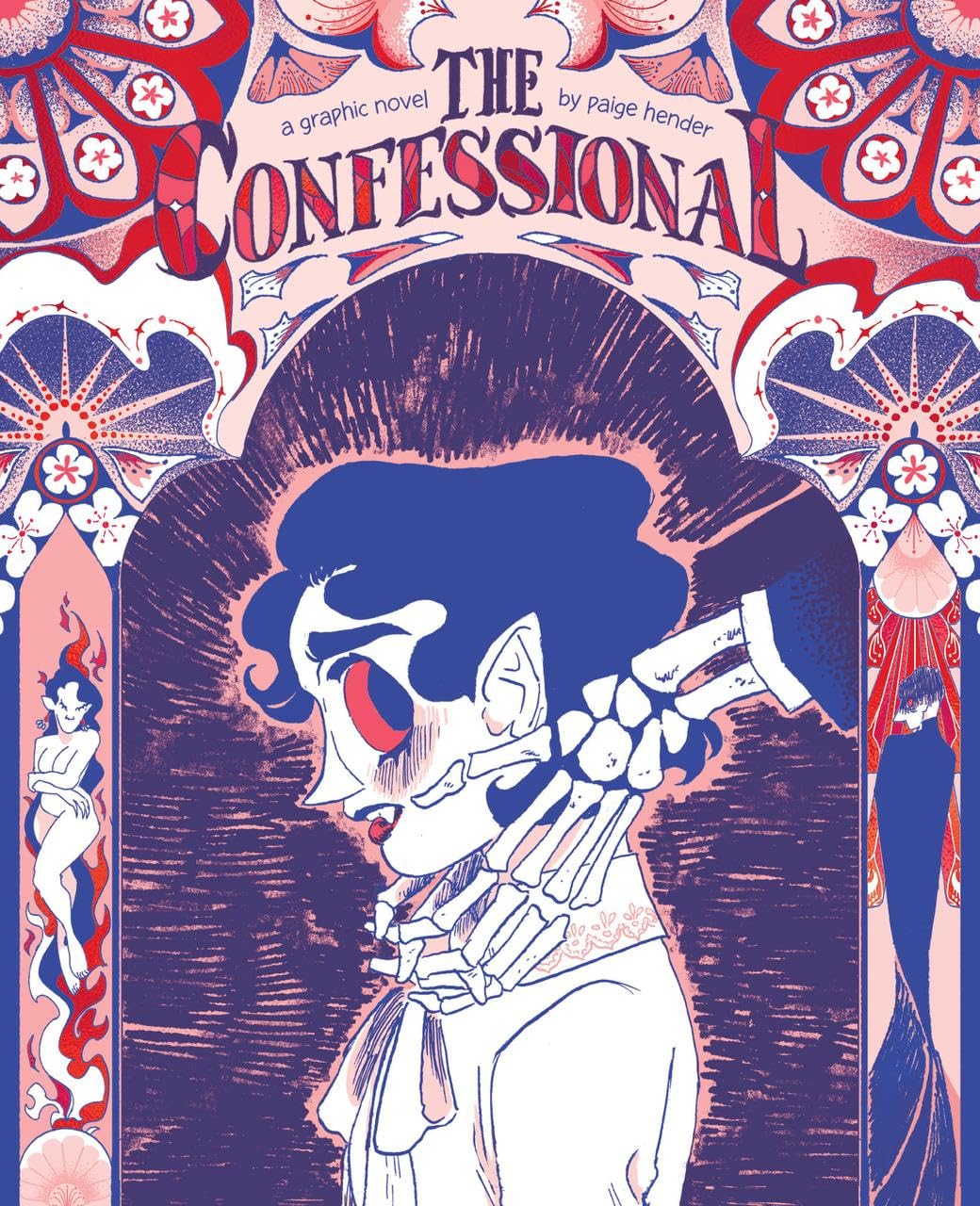
#12) The Confessional
2025 is a bit of a downer (wah wah!) for a lot of very large and meaningful reasons (personally, I would like to live in a period of history where the words genocide and authoritarianism were significantly less applicable), but the reported downfall of Silver Sprocket is the smallest niche bummer that upset my comics equilibrium the most. I fell hard for the publisher last year, selecting them as my favorite publisher of 2025, and whether or not an individual work made it onto my personal favorites, I always enjoyed making time for a house that so effectively curated predominantly queer, diverse cartoonists telling stories *their* way. When Sprocket launched a fundraising campaign last year I bought *two* annual subscriptions. I really believed in the product.
Then, as so often happens, the beauty of the art ran into the reality of mismanagement and – that old saw – MONEY. Rumblings of late/questionable creator payment approaches exploded into an expose by Zach Rabiroff on The Comics Journal. I talked to several Sprocket cartoonists at CAKE, and all of them expressed a sense of unease, and uncertainty whether or not they’d work with the publisher again. There’s a lot more to say, but all of it cemented something I’ve been growing towards: Believe in and support creators and editors, not the institutions they serve.
As I alluded, the reason Silver Sprocket’s troubles are such a bummer is because they were/are an institution with incredible taste and ability to foster fantastic alt-comix. That’s fully on display in the amazing debut graphic novel The Confessional by Paige Hender. Set in 1922 New Orleans, 2 years into Prohibition, Hender’s stunningly illustrated work follows a young vampire Cora and her sisters/colleagues/friends as they work (and feed) at a local brothel. Cora is particularly uneasy with the state of vampiric feeding on humans (especially because she can’t feed without killing) and begins seeking the church for absolution and the hot priest (shouts to Fleabag!). Everything takes a turn when hot priest reveals he’s using patrons confessions to seek out and dispose of the worst sinners, enlisting Cora in an increasingly unhealthy relationship as they hunt together.
Hender’s fully in control of a gripping work, blending a light pink base tone with explosively sensual or violent reds, and comfortably alternating in and patiently building to the earned transformations of Cora in her full vampiric form. There’s an impressive narrative patience here as well, where Hender doesn’t play her hand too overtly until its clear hot priest has gone too far. It’s really an astonishing debut – debut! – from a cartoonist I hope to see published by anyone and everyone reading!
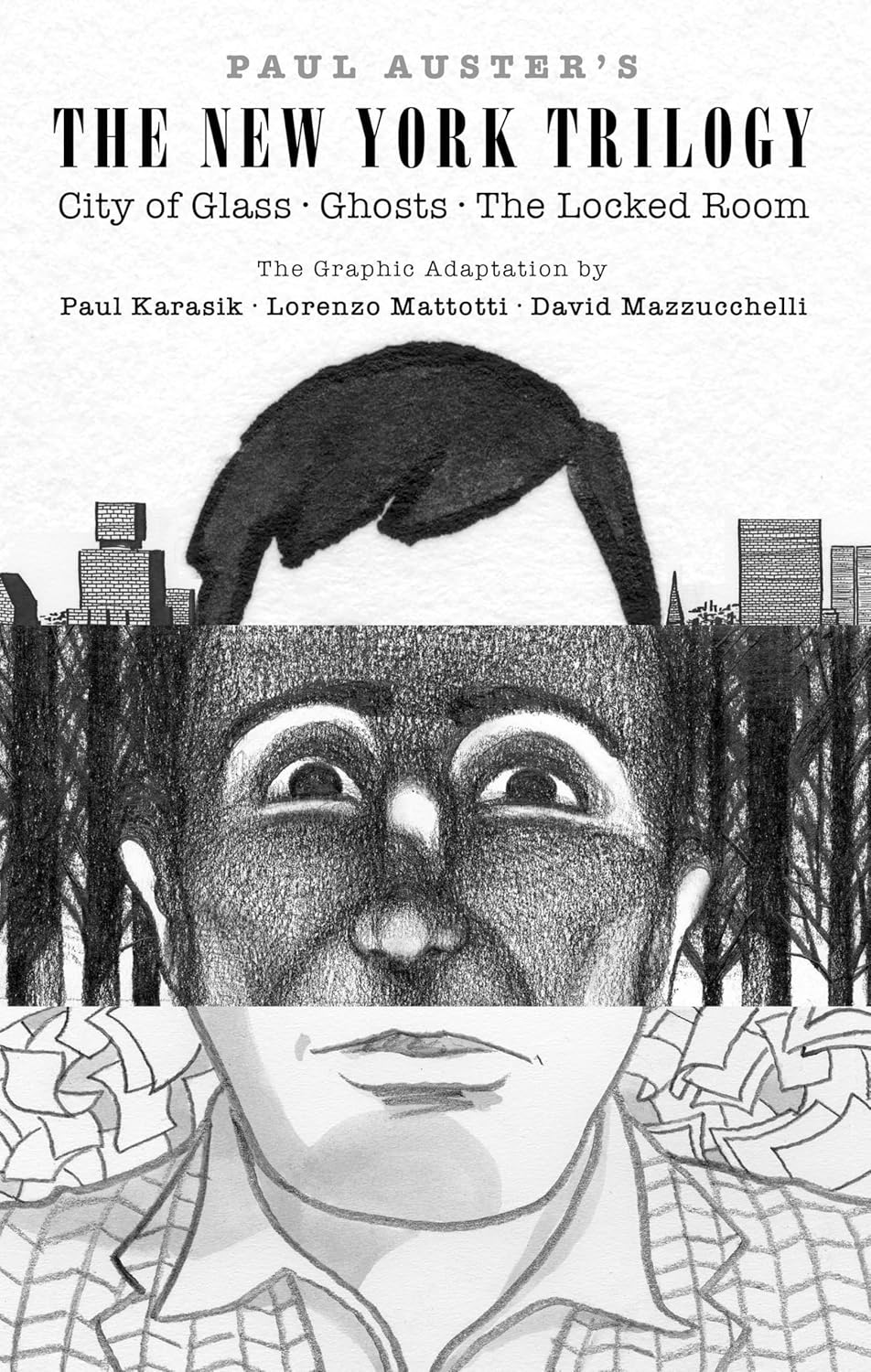
#11) Paul Auster’s New York Trilogy
It’s a mild challenge to “rank” the full New York Trilogy, a new Abrams collection of 3 graphic novels adapted from the works of the incredible novelist Paul Auster, based on his 3 novellas released sequentially from 1985 to 1987. For starters, the opening salvo, City of Glass, is among my 50 favorite comics of all time, and Paul Karasik and David Mazzucchelli’s adaptation has been considered an all-timer since publication in 1994. What we’re really considering, then, with the New York Trilogy is the two freshly released adaptations of Ghosts by Lorenzo Mattotti (art directed by Karasik), and The Locked Room by Karasik. If you simply need a hardcover collection of City of Glass, or an excuse to read more by Paul Auster, what are you waiting for?!
Auster’s New York Trilogy is summarized as literary detective-noir fiction, with connective tissue of three protagonists who become completely consumed by the cases they’re tasked with solving. To be a leading man in Auster’s New York Trilogy is to lose yourself entirely to insular fixations at the expense of everything and everyone around you. Structurally, Ghosts is the least of-a-piece with the Trilogy, and Karasik and Mattotti match Auster’s near-storybook framing (the characters are all a Mr. Blue, Mr. Green, Mrs. Blue, etc) with a single illustration per page standing above the novella’s text. There are pointed exceptions, when text is framed in a different font on a typewriter, but generally we sink deeper and deeper into Blue’s P.I. insulation (he goes on a stakeout that lasts seemingly forever) with Mattotti’s gray-black pencil-shading either matching the text directly or in abstract. There are some particularly excellent translations, such as Mattotti’s depiction of Mr. White in his garish Halloween mask. Matching Auster’s own deconstruction of genre-expectation, Mattotti and Karasik increasingly depart from the initial structure, alternating between pure-text, traditional 3-or-4-panel grids, and finally splash pages full of word balloon dialog. Ghosts is unquestionably the least striking of the trilogy, but I’d also read it again in a heartbeat.
The Locked Room is the true marvel here, most reminiscent of Karasik’s incredible contributions to City of Glass, albeit sans Mazzucchelli. It’s hardly surprising that the comics canon has lost view of Karasik in the shadow of Mazzucchelli (this will happen when you make Batman Year One and Daredevil: Born Again with Frank Miller), but his comics resume is fascinating. Karasik was an associate editor of the esteemed RAW magazine with Art Spiegelman and Francoise Mouly, of course adapted City of Glass, and wrote the famous essay, “How to Read Nancy” (second only in esteem, of course, to Tiffany Babb’s recent Comics Courier essay, “How to Read ‘How to Read Nancy'”)! The Locked Room and this full Pantheon collection of Karasik’s Auster adaptations should cement the cartoonist as his own force for a new generation. Karasik shows tremendous respect for Auster’s writing, with an innate understanding of when to depict events literally and when to operate in the abstract. Like Ghosts, Karasik’s Locked Room begins mostly via familiar modes of comics, with clean gray-washed pencils refusing any overly showy tricks in favor of immersive storytelling. As the author’s journey to find his missing, thought-dead friend, Fanshawe, escalates and consumes him, Karasik opens the bag of tricks. A particular favorite occurs while our narrator is swept up in the seductive, drunken praise of Fanshawe’s mother, and the character is literally lifted out of his seat by the swelling rising speech bubbles. I’ve seen cartoonists play with interactive dialog before, but never quite so literally as balloons! To say the work’s conclusion is a page-turner is an understatement, and for my money, it’s every bit as memorable as City of Glass.
All in all, the full New York Trilogy is quickly one of my favorite collections on my bookshelf. If the rest of the talented cartoonists of the world could promptly adapt the remainder of Auster’s works, that would be greatly appreciated.

#10) Spent
There are three comics that shaped the kind of comics fan I’d become, all read between the age of 19 and 21 while I was at university (I’ve been reading Babel, excuse me for a moment if I affect the linguistics of a 19th century Oxford student). The first two are superhero standards – The Essential volume of Amazing Spider-Man by Ditko and Lee, and Watchmen – but it’s the third that stands out as most important. In a course on Autobiography, I was assigned Alison Bechdel’s Fun Home. A graphic novel. In *college*.
With the exception of an optional Maus summer reading in high school (I opted for Ayn Rand’s The Fountainhead; I was 16! I didn’t know!), this simply didn’t happen.
It wasn’t so much the idea that a comic could present serious literature as it was the perceived institutional acceptance of this idea. If this was true, then I could embrace them entirely. Comics could be anything! I quite loved Fun Home, and all that it represented to me – reading Fun Home alongside a course on Joyce is like Colossus throwing Wolverine to the Moon – but I haven’t found that same enthusiasm returning to Bechdel’s works in the last couple years. I’ve come away from Are You My Mother and The Secret to Superhuman Strength with admiration, but never awe, never enthusiasm.
I feel entirely the opposite about Bechdel’s new work of autofiction (a fictionalized account of an autobiography), Spent. While the work initially suggests this is Bechdel’s treatise on capitalism – chapter titles include “The process of production of capital” and “The transformation of the Value (And Respectively the Price) of Labour-Power into Wages” – we come to learn this is done with a knowing wink, as Bechdel’s fictional self-insert struggles to write her next graphic novel (and maybe TV Show), $um. Through autofiction, Bechdel captures a delightfully charming remove from her long-articulated intellect, moving half a step to the left to look at a world where Fun Home is replaced with Death and Taximdermy, now a hit “prestige” TV series on Schmamazon.
Spent effectively captures the overwhelming feeling of everything bad happening everywhere all the time through the lens of Bechdel and an array of charming progressive activists.
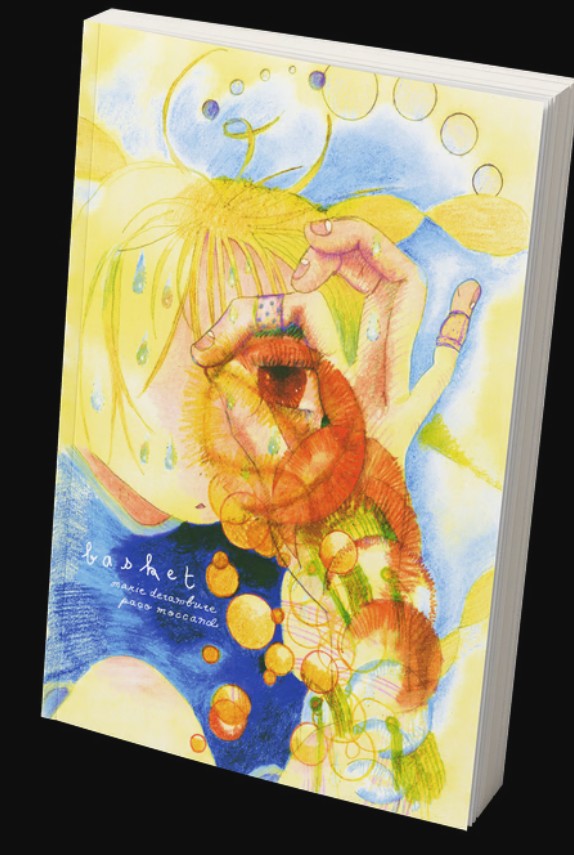
#9) Basket
One of my greatest cases of FOMO in comics came this year when my favorite indie comics reviewer, Arpad Okay, highly recommended the recently kickstarted Basket from Lucky Pocket Press. As this recommendation came after the Kickstarter had completed, and before I entered my “I’m going to spend all my discretionary income on Kickstarter Comics before I don’t have any” era, I saw no path to my own copy of Basket. This may sound dramatic, but we’re talking about a highly recommended indie comic about BASKETBALL. It’s a wonder I didn’t die right there on the spot.
Good things come to those who can’t wait, and I found a physical copy of Basket at Chicago’s CAKE. Marie Derambure and Paco Moccand’s ~200 page look into a plucky junior high girls basketball club is pure bliss. On a narrative level, Basket is tremendously simple, a classic scrappy underdog story not that far removed from the Matt Christopher novels that introduced me to reading, or even the classic sports movie template of The Mighty Ducks. The star player, Ines, only has eyes on advancing her hoops career and living up to the dream of her Short King idol Spud Webb (shouts to Mugsy Bogues for not getting enough love in this book, but then again I guess he got his turn in Space Jam and NBA Jam!). The team’s Coach betrays her own team in an effort to move up to the area’s wealthier competitive team. And yet the group of girls band together and baby they are born to run!
Much like Sloane Leong’s excellent A Map to the Sun, though, Basket is far more interested in atmosphere, environment, character, and using the medium of comics in exciting, unconventional ways. Derambure’s loose pencils are the revelation here, alternating masterfully between sketch, manga-esque emotive shorthand (for example, character’s faces growing to 10x their traditional proportion to show THEY ARE SHOUTING), and some truly stunning panel-less explosions of kinetic hoops action colliding on the page. I particularly appreciate the characterization of Ines’ pigtails, approximately 12 feet in length each, roping around the court like Omega Red’s tentacles. I talk a lot these days about my love of comics that inspire the urge to make comics, and Basket is one of the year’s leading examples of the kind of emotion and craft you can transport across space and time if you just take the time to put that pen to paper. The clarity, or linear progression of events doesn’t always make sense, but it’s always fueled by the energy of conveying a unique moment in these girls’ lives. Type that in a prompt and smoke it.

#8) Hello Sunshine
I knew I’d appreciate Keezy Young’s Hello Sunshine, but I was not prepared for the graphic novel to completely blow me away and seriously enter the best of the year conversation. Hello Sunshine follows 5 high school teens, with one chapter dedicated to each, as one of the teens, Alex, mysteriously goes missing. The remaining four – connected by friendship, family, and developing queer love – doggedly search to unearth what happened to Alex and whether or not he’s even still alive.
Young brings a Mazzuchelli/Aja inspired style of cartooning – with a skill right alongside one of my modern favorites, Tyler Boss – to the YA horror genre, with an autumnal color palette by way of Matt Hollingsworth. Young’s Scooby Doo teen paranormal investigators simply look phenomenal, with the blend of style, character, and flourish that elevates a graphic novel from nice to transcendent. At my most reductive, I’d say it’s like what if Heartstopper met Hellblazer, but that only captures parts of Noah and Alex’s sweet romance, and the developing threat of various demons that may or may not be real. There’s a real lived-in complexity and attention given to each of the teens and their relationships to both Alex and each other, with fully satisfying arcs for the whole gang.
If you’ve read Young’s award-winning Sunflowers, you know the author has effectively laid bare her own experiences with bipolar mania and depression. Young brings that same hard-earned perspective to Hello Sunshine, with an almost impossibly seamless blending of mental health awareness and demonic possession, without losing the seriousness of the real to the cushion of the metaphor. What’s remarkable is how Young’s intention gains clarity as the lengthy – near 400 page – work progress, setting up trope-filled ‘outs’ only to knock them all down one by one before settling on a reality I’ve literally never seen in fiction.
Here’s the other thing about Hello Sunshine: It’s actually scary. Listen, I know I’m the famously brave young comics critic (brave enough to admit I find Metroid Prime terrifying!), but Hello Sunshine’s paranormal/demonic presences gave me pause when I considered reading with the sun down. Young’s demons are like what if the shadows in your attic ate Mike Mignola’s scariest drawings, and the use of colliding lettering to depict the voices in Alex’s head are claustrophobic, traumatic and overwhelming. All with great purpose too.
Hot damn this book! Among the year’s best. Young’s next comic can’t come fast enough.
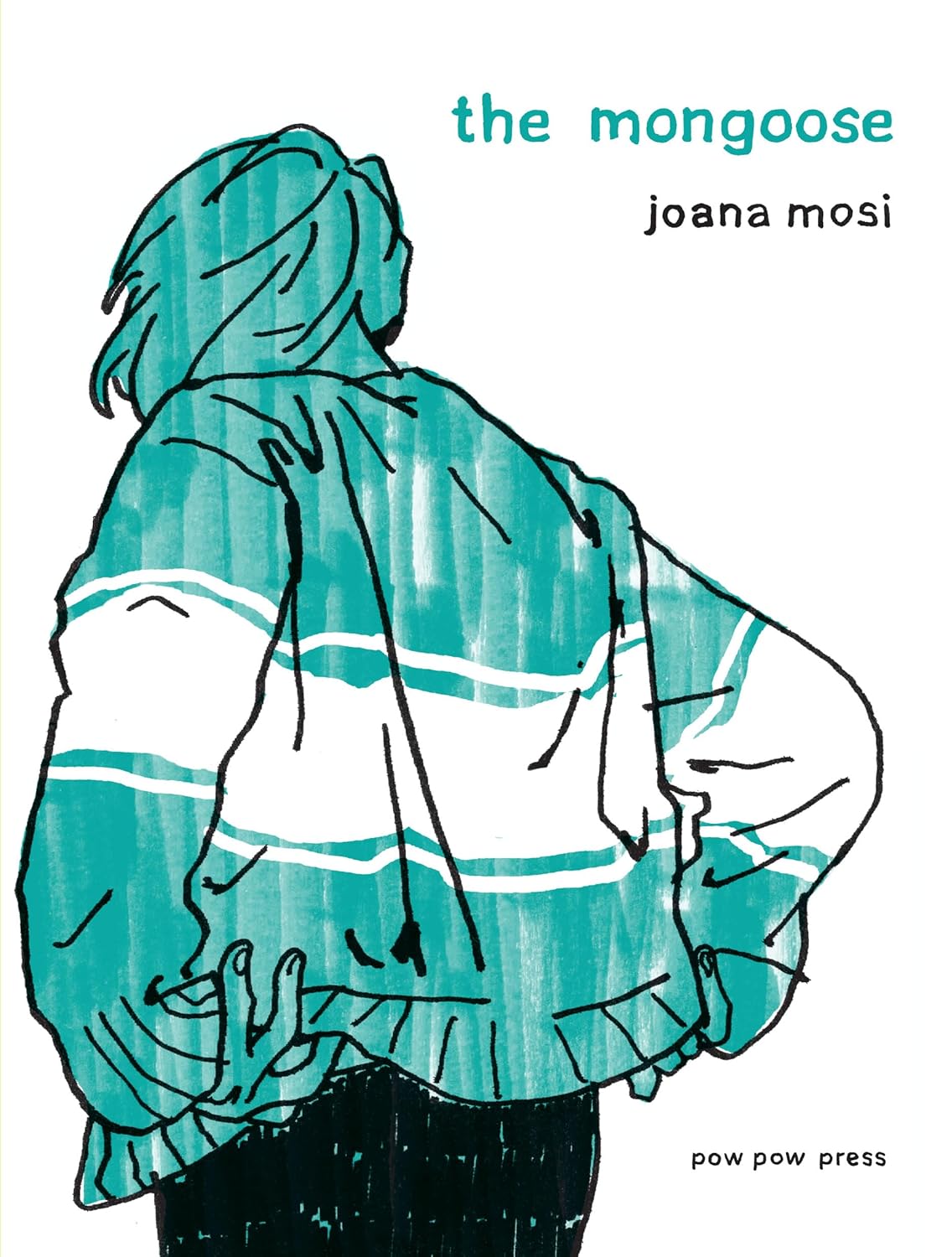
#7) The Mongoose
I’ve been really impressed by the taste and young talent being developed by Montreal’s Pow Pow Press, including last year’s Eisner-winning The Jellyfish by Boum among my favorite comics of 2024. They’re back in the conversation for best of the year with Joana Mosi’s The Mongoose, an award-winning Portuguese graphic novel from 2023, now translated into English.
Mosi’s effortlessly easy style and focus on character psychologically reminds me of Nick Drnaso’s Sabrina, here in a story about a woman struggling in the aftermath of losing her husband, now obsessed with what she has decided is uprooting her small backyard garden: A questionably real Mongoose. Mosi’s cartooning is initially almost too minimalist (we may be setting a record for the sheer number of faces with zero detail on them – just blank circles of void), but quickly offset by two incredible gifts: formal innovation and pitch-perfect character-building dialog. Mosi uses panel layouts to convey invading thoughts, whether it’s that dastardly (fictional?) Mongoose, or Julia’s memories of a walk on the beach with her husband. The instincts for pacing are incredible, with Mosi completely unafraid to commit pages to two spread out panels of a garden-bed at rest.
Julia’s family is incredibly well detailed here as well, with a brother struggling to get back in a changing job market, and a “means well” but constantly critical mother masquerading critiques as aid in the way only moms can. Meanwhile, Julia gets more and more obsessed with Mongoose facts, reminding me of the way my kids get when they get a new animal facts book, but without all the clear trauma displacement. Julia’s growing obsession is this incredible line of darkly funny – panels of that cute lil’ imaginary Timon-lookin’ goof underlined by Julia’s internal “I’m going to kill him” – and increasingly tender and sad. Mosi avoids easy answers, or grand epiphanies, and roots the story in the real. Sometimes in this life, we never find that damn Mongoose after all.

#6) Beat It, Rufus
I’d never read the work of Noah Van Sciver before, admittedly due to the poisonous association of his brother Ethan (it’d be like finding out Van Jones was the brother of Alex Jones… ok, that’d be *slightly* more surprising and toxic). As far as I can tell, though, Noah is very much his own person, with an Ignatz award winning resume of R. Crumb inspired Comix, and the enthusiastic backing of the Fantagraphics cartoonist machine. And whatever he thinks of his monstrous bro, Beat It, Rufus is among the best graphic novels of 2025.
Aging dirtbag rockers are catnip for me (what’s up School of Rock), and Van Sciver’s Rufus ranks among the sleeziest of them. Better yet, Rufus is an also-ran, still clinging to an almost-made-it moment from decades ago that ended when his two bandmates (apparently) died on the tour jet (that they paid for themselves!). What follows is an immaculate journey into the descent of this oddly charming loser, barely a guitar to his name, and what happens when he finally starts to reconnect from the players who saw the worst of him in that past life. It’s an extremely funny imagining of a particular type of glory-days-dude, with Van Sciver happy to lean into the nastiness of both visual and attitude (Rufus discovering he just might be allergic to cats is a particularly humorous gross-out sequence). If you find yourself thinking “I haven’t watched Spinal Tap in a while” a few times a year, Beat It, Rufus is a must.
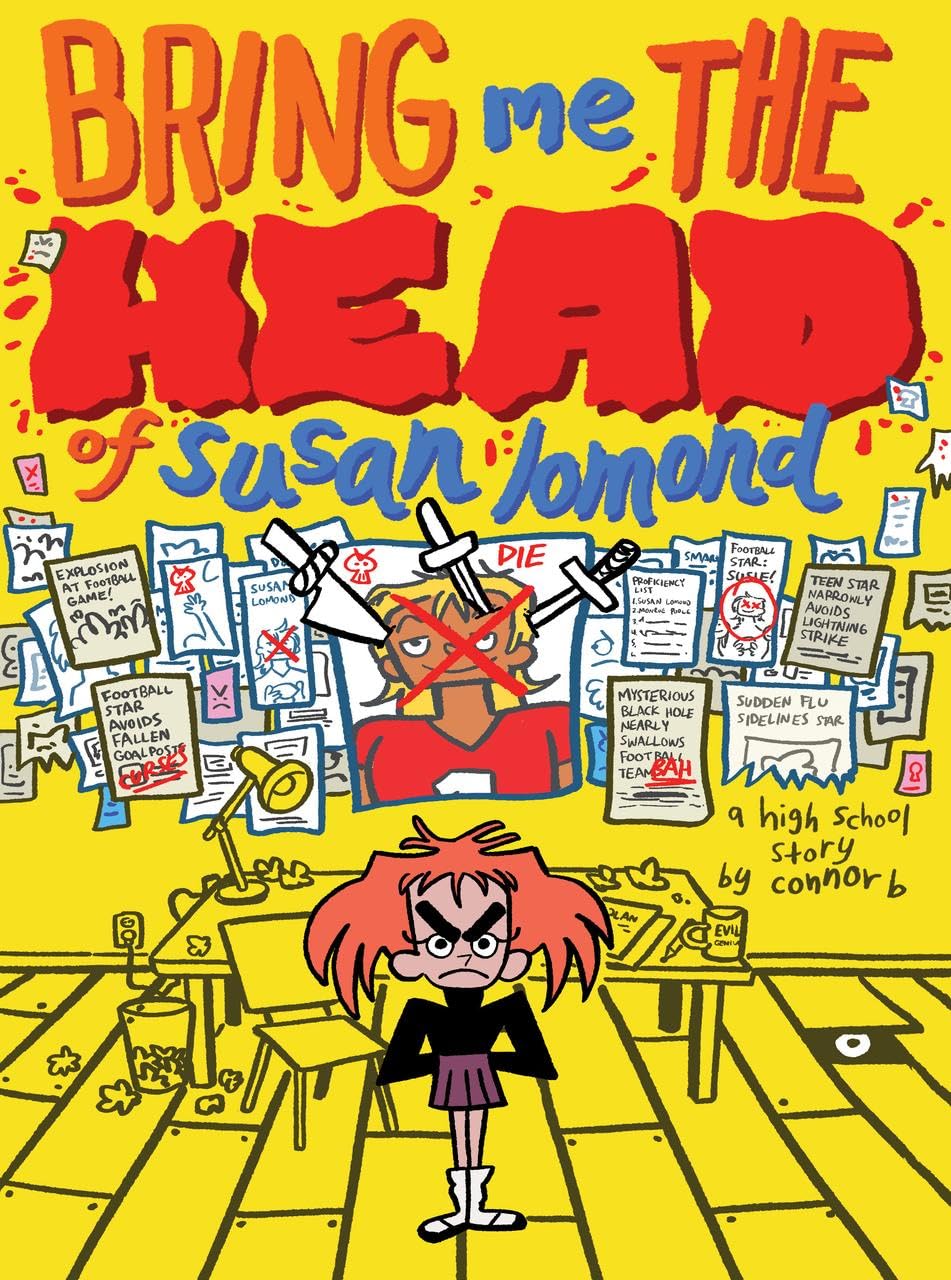
#5) Bring Me the Head of Susan Lomond
Silver Sprocket stays winning with this delightful riff on high school rivalries (and the thin line between rivalry and relationship!) from debut graphic novelist Connor B. It’s Wednesday meets Dexter’s Laboratory, as teen genius/mad scientist Monroe Poole looks to exact her revenge on high school Prom Queen/star of the football team Susan Lomond. Sure, the thing starts with Monroe trying to blow up Susan in the end zone, and may or may not include plans to send a flying lumberjack’s ax at Susan’s head during Prom, but you won’t find many cuter, sweeter or more wholesome stories of blooming queer love in the entire YA market!
Connor B’s cartooning is clear, focused, and quite good at emphasizing how slight movement of the eye or flushing of the cheeks can convey entire volumes of character-building. It’s a familiar trope that two teen “enemies” might actually have the hots for each other, but Connor B approaches the work with such an enthusiastic love of Monroe’s family of mad scientists (big shouts to Nero) that by work’s end it’s a wonder this wasn’t already a beloved Saturday morning cartoon. I would read an entire shelf’s worth of a “Bring Me the Head of…” series with this precise blend of absurdist dark humor and budding supervillain romance.

#4) Cannon
I missed out on Lee Lai’s Stone Fruit, one of the most critically acclaimed graphic novels of 2021, so I truly had no idea what to expect from Cannon apart from art that delighted critics last time out. Much like my experience with Olivier Schrauwen’s Sunday, turns out those critics knew what they were talking about. Lai writes some of the best dialogue and character development in comics, here with a chef’s assistant steadily building to a nervous breakdown. Lai’s steady four-panel black-and-white cartooning evokes a simplicity that belies the complexity of gripping character work that – with one exception – almost never explodes into the sensational.
“Slice-of-life” is overused as a descriptor, too often in comics meant to illustrate a realization that “uh, this one doesn’t have costumes and punching!” Cannon will unquestionably get the “slice-of-life” label too, but I think that undersells the actualization of the lives that Lai builds here, the kind of ear and eye for life that makes you wonder if this fiction could actually be autobiography. If you plot out what *actually happens* in Cannon, I suspect it would sound like the most innocuous bottle episode of The Bear. Yet, Lai’s pacing is captivating, leading with the dramatic irony of a wrecked restaurant, and then steadily moving through hesitant romance, fracturing friendships, sexually manipulative bosses and supportive co-workers until we fully understand why plates have to fly across the dining room. One of the best works of the year. I won’t be missing anything from Lai again.
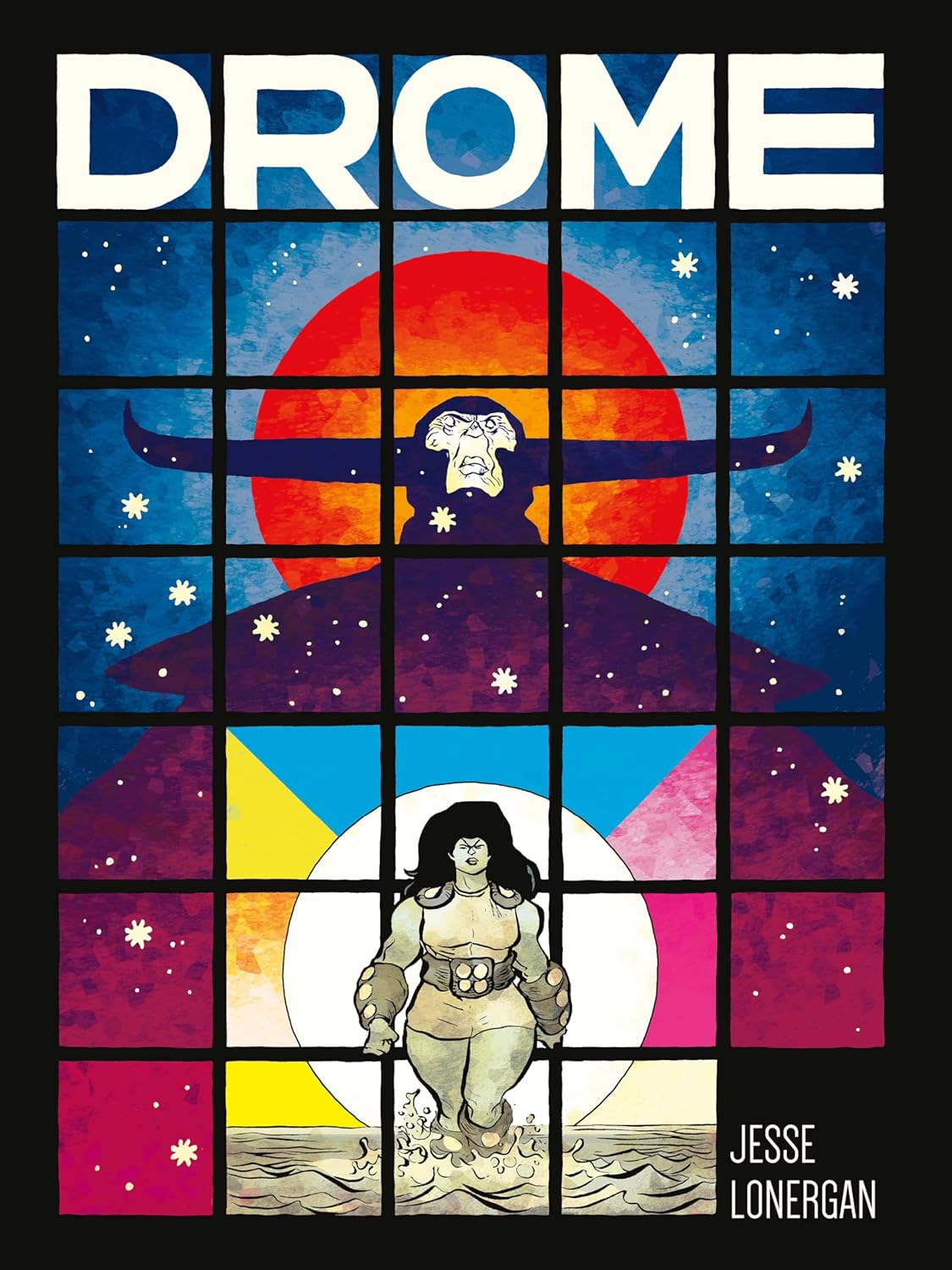
#3) Drome
I interviewed Jesse Lonergan in 2023, and while preparing for that interview, I read through the in progress pages of what would become Drome (Droma/Prime) via his Patreon. I was blown away, and more or less guaranteed that whenever the full work saw the light of day, it would be the best comic of the year.
Did Lonergan deliver on my high praise? He’s certainly close! Where past Lonergan releases have showcased a uniquely analytical visionary applying their skillset to sci-fi (Hedra, Planet Paradise, Man’s Best), on Drome Lonergan fully embraces mythology, fantasy, and a delightful love of creature design. The result is a Kirby/Starlin infused creation myth full of warriors, epic fights, and the bitter resentments of humanity.
Lonergan thinks in grids more than perhaps any comics artist I’ve ever seen, and Drome is pointedly broken into a 5×7 panel structure (even the cover displays the grid template!). If you’ve read Hedra or Planet Paradise, you know that Lonergan utilizes his panels unlike anyone, conveying movement across borders and fluent action described on the page in a way most artists leave to the imagined movement of the gutters. Drome takes the same approach but on an epic scale, carrying 300+ pages of primarily wordless story in such a way that I was completely absorbed. There’s a danger for silent comics to slip into “fast” reading, flying through pages without full immersion. Lonergan avoids that with a complexity of decisions going into every battle, every scene, where the reader needs to give themselves to the approach or be left under the cosmic stars confused and cold.
While visually stunning – just look at what comics can do! – I’ll admit the approach does come at the cost of character. Lonergan’s figures are memorable, and intriguingly crafted, but ultimately, there’s a flatness. I don’t know that I’d go so far as to say Lonergan is too calculated – there’s a tenderness to the Blue and Red Warrior’s romance, and a “somebody yeet this man into the sun” energy with the toxic masculinity of the villain. Nonetheless, there’s a layer of emotional resonance missing from Drome. Kirby’s 4th World manages it with familial drama, and Scott and Barda – but in general that’s tough to pull off with creation myths. We don’t crown our kings for nothing I suppose.
In terms of vision, ambition and sheer love of what comics can be, Drome is a triumph, and Lonergan’s most impressive work to date. If you’re a fan of the aforementioned cosmic OGs, or Copra, or anything that celebrates cartoonists putting pencil to paper and imagining new ways for lines to form, Drome is a must.

#2) Cornelius: The Merry Life of a Wretched Dog
Marc Torices’ Cornelius, translated from Spanish by Andrea Rosenberg, is full of best-of-the-year ambition from top to bottom. Describing Torices’ vision here is a bit like writing a song that smells like a rainbow, but here goes: Cornelius The Dog is a cultural comic strip icon, and this book (the first of 40 volumes lol) compiles the comic strip history of the world famous character. None of this is true – of course – but these are the rules of Torices’ work, where Cornelius is deeply tied to the fictional Maiame’s cultural and political nationhood, and has been for a full 300 years. Through a chameleonic blend of cartoon styles, this volume eventually settles into a narrative in which Cornelius witnesses the abduction of Alspacka (too good for this world!) and then proceeds to botch and obfuscate all attempts to rescue her. Honestly, chameleonic is too soft a word-choice – Torices draws like his nib is caught in a time-warp flitting in and out of comic strip styles like if he misses one the Maimese government will sue him for another lifetime of unpaid comics-making.
It’s fair to say I have a type, and much like Mary Tyler Moorehawk (my favorite comic of 2024), Torices’ continues the David Foster Wallacization of graphic novels with the work’s most compelling addition: FOOTNOTES. That’s right, Cornelius is the greatest of literary Marvels, a multi-bookmark book (one for the narrative, and one for the corresponding footnotes in the back!). The footnotes are what elevate Cornelius from a curious experiment in endlessly shifting style to a satirical, darkly funny critique of the history of comics-making. The footnotes are where the fictionalized world of Cornelius’ creation and import is fleshed out, detailing the politics of Maiame, the central industrial influence of SLAKR Group’s publication of the title, and the various figures, misfortunes and lawsuits that have accompanied Cornelius. The SLAKR Group is revealed as the prototypical greedy, corrupt publisher, exploiting workers, avoiding crediting individuals, and covering up collapsing offices. These hyper-detailed histories frequently give way to deadpan farce, though, as Torices weaves in a legal system based on the theory that comedy=tragedy+time, or the entire history of Cornelius’ Tijuana Bible market, which the SLAKER group adopts as 30% of its annual profits.
In fact, the footnotes are such effective satire, much of my read was simply anticipation between sneaky footnotes (they are quite easy to miss), and one of my largest critiques is that Torices clearly ran out of steam of the frenetic pace in the book’s back third. The actual story of Cornelius – wretched might be mildly strong, but certainly cowardly and ineffectual – is far more hit or miss, tonally closer to the likes of Chris Ware’s Jimmy Corrigan than the classic American strips I’m more familiar with (what’s up, Peanuts). Even so, Torices’ ambition and constant change of pace makes for a hefty read I rarely wanted to put down.
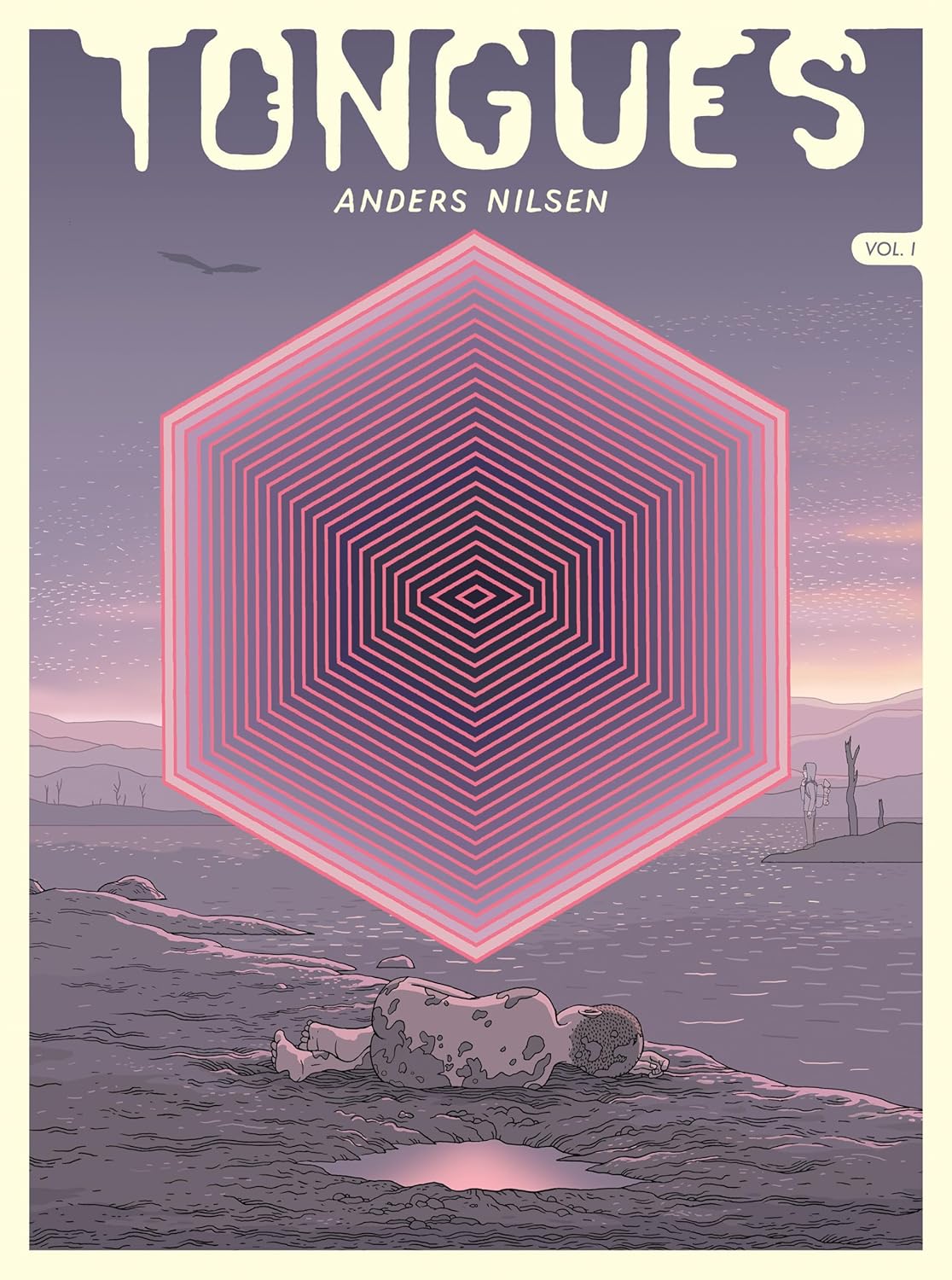
#1) Tongues
Anders Nilsen’s Tongues wants to rise to the level of the greats, and it has all the tools to get there. Ostensibly, Tongues is a reimagining of the myth of Prometheus, the prisoner of the gods chained to a mountaintop for eternity due to his overeager infatuation with the disease of humankind (or so his family of jailors would tell you). The story of Prometheus on the mountain and the viability of the human experiment is only one of three core narratives, though, as the work spans near-present-day Central Asia with a cast of children, soldiers, monkeys and god-chickens. The scope is astonishing; it’s a challenge not to get lost in superlative. It’s the kind of work with a pull quote referencing Maus, Fun Home, Persepolis, and Jimmy Corrigan in a single breathless name-check. Nilsen’s modern mythology possesses Moebius’ soft touch and Art Spiegelman’s experimental ambition, with the world-weary design of Frank Quitely and the panel-defying layouts of P. Craig Russell.
Whether it’s my thumb catching an unexpected fold on a page that reveals an explosion of mysterious floral biology, or the way a page of comics might consist of 11 teardrops, creeping with the verdant flora of Prometheus’ hillside, there are repeated moments of ecstasy revealing modes of storytelling I haven’t experienced before. Structurally and visually, Tongues is simply one of the coolest graphic novels I’ve ever held. This, plus an enigmatic core shrouding quests and connective tissue in layered secrecy makes for comics offering the rarest of promises: rewarding, near-necessary rereads.
It wasn’t until I was about 2/3rds of the way through Tongues that I noticed the “Vol. 1” indicia on its spine. This is both thrilling and deflating. It’s exciting that Nilsen would want to return to this world, that there’s the promise of a volume 2 on the horizon; it’s deflating in the sense that for most of its duration this feels like the sort of masterwork that deserves a satisfactory conclusion (and without the eternity of the gods, I am naturally impatient). I came into Nilsen’s work cold, but have since learned that Tongues has been in-progress for years, and that this Pantheon collection assembles the last 7+ years of six issues. Hopefully the second volume won’t take as long, but frankly, given the attention to detail and bursting creativity on every page, it’s almost a relief to learn no one crafted something so gorgeous in any shorter amount of time. I don’t need to actually discover I’ve been eating from the liver of gods myself.
Tongues is my pick for graphic novel of the year. I promise you’ll enjoy it in print more, too.
Catch up on all CBH’s favorite graphic novels of 2025 right here!


It feels rare to see an end-of-year list with tastes that span so freely from Silver Sprocket and D+Q to Viz and even Marvel and DC, but that reflects my own reading habits so I love to see it. 🙂 Great list!
This list is awesome. Well done. Discovered comics and your recs got me hooked. Love it!
What a weird list, there’s a ton of woke ass DEI political series in this list. Hard to take these recommendations seriously anymore. will be looking elsewhere for less politically charged recommendations.
Tell me you have no reading comprehension without actually saying it.
Comics have always been political and progressive. Not the rest of our faults that you’re too dumb to realize that.
David Rubín has been writer and artist for his comic books from the beginning..”El circo des desaliento”, “corazón de Tormentas”, “El héroe book 1 and 2″…I do not know which ones were translated into English..but they are quite good.
Regards,
TRIAL + ERROR was pretty nuts. not as nuts as some of these comments, tho. phew.
the first QOTSA record shreds like SD does. “if only” is particularly smash pumps. blind melon also hit that shreddy sailing sweet spot. “sleepyhouse” maybe.
Found several titles to add to my reading list. Great work!
Not sure why the comments on this page so far are so unhinged, but keep up the great work Dave! Love MMY and getting recs outside of the big 2!
THIS IS A,LIST NOBODY WOULD EVER FOLLOW IN ADVICE FOR READING COMIC BOOKS MAYBE WHEN WRITERS GET BACK TO WRITING GREAT STORIES &(ARTICLES) NOT JUST CURRENT TALKING POINTS AND BS . BUT UNTIL THAT DAY THIS LIST AND ALMOST ALL LIKE IT ARE TRASH JUST LIKE CURRENT AWARD CEREMONIES AND SUCH !!!
Don’t ya have anything better to do than SHOUT OUT BS on the interwebs, Lionel?
Someone has bad taste in comic book
fuck off, CK